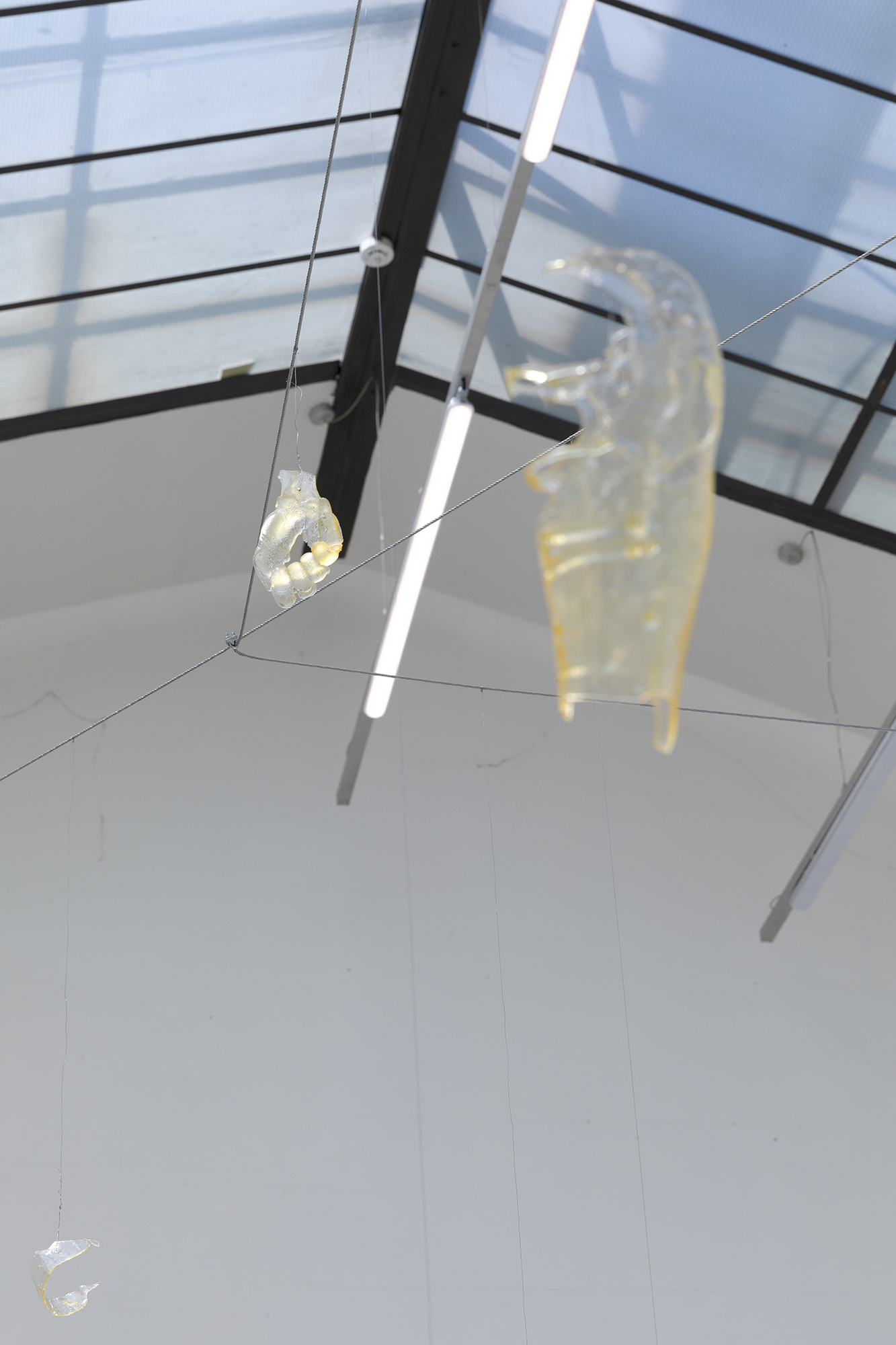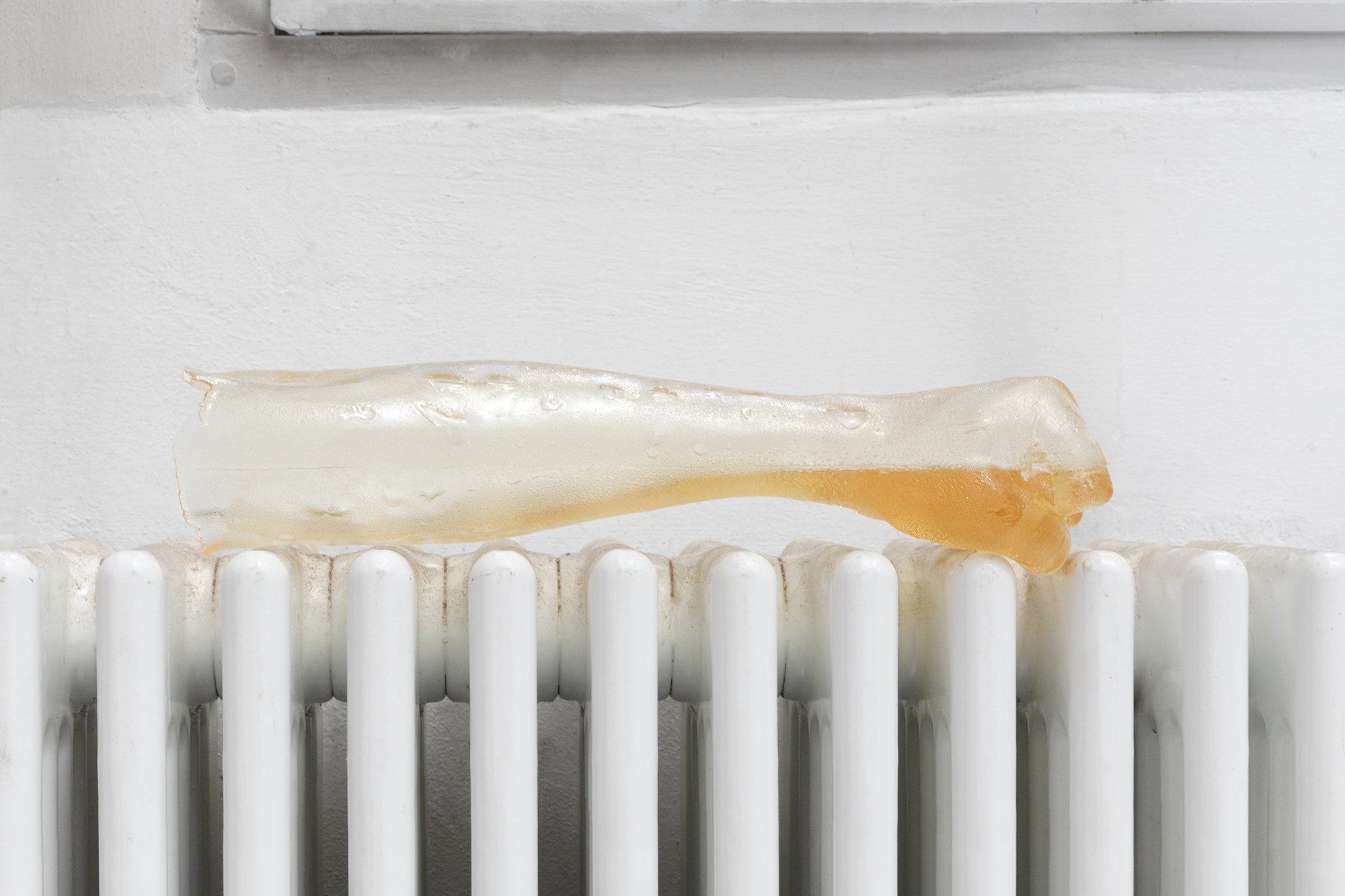chapels
object
various sizes
wood, stain, acrylic paint, mother of pearl, leaf gold
2024-
various sizes
wood, stain, acrylic paint, mother of pearl, leaf gold
2024-
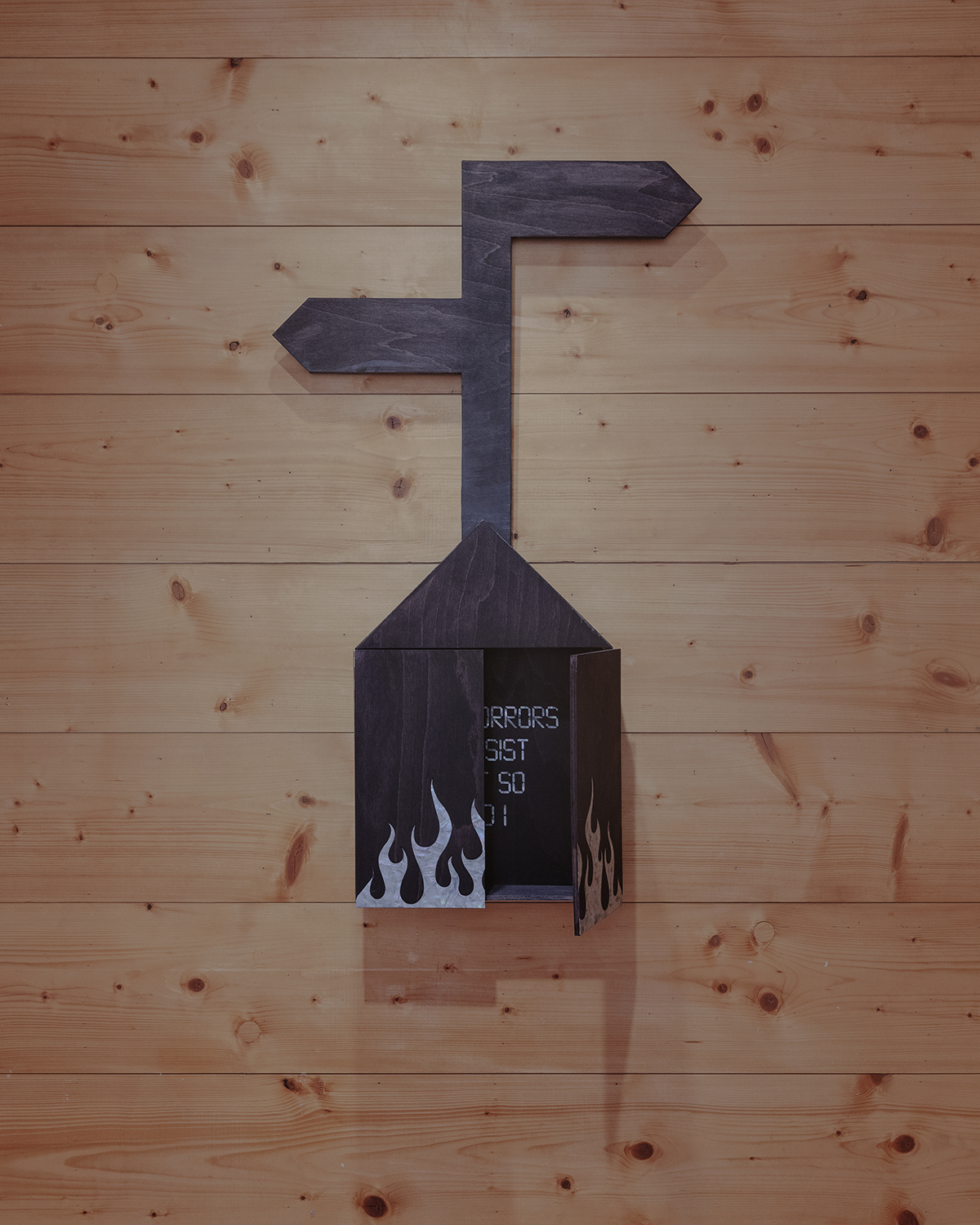
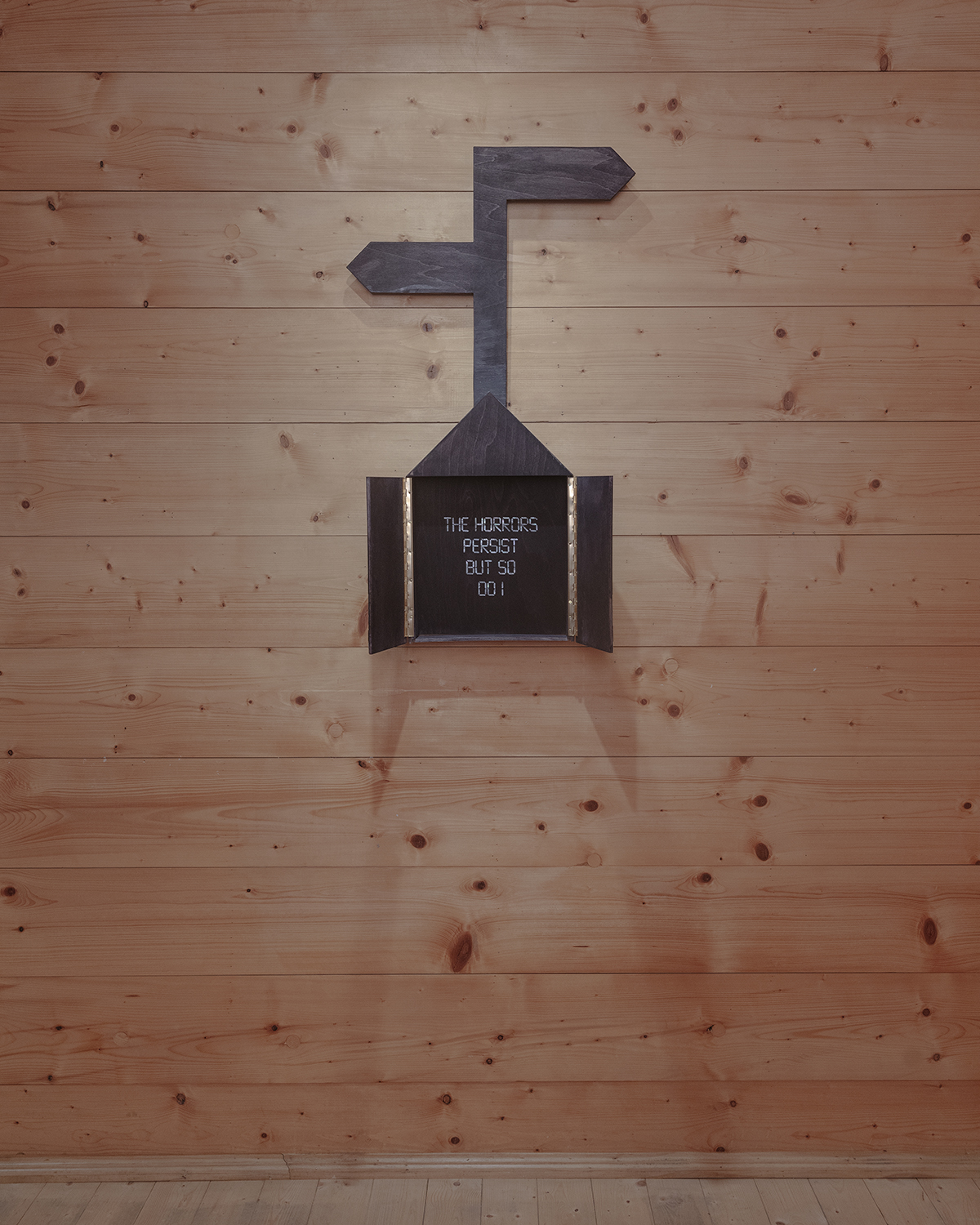
During summer of 2024 I took part in a symposium organised by Fundacja Jaw Dikh in Rzepiska, Poland. These objects are directly inspired by the chapels found in the area, that are being built by the residents in front of their homes and serve as spiritual protection. I became increasingly interested in this subject, since while a house itself serves as a shelter for our physical safety, i assume these chapels are supposed to deliver spiritual one - bring a peace of mind, a warmness and calmness to the house. I actually very appreciate the idea of building a talisman to look after you, after all, it is very typical for people accross various cultures to put meaning into objects. I was working with physical form of these chapels, which when stripped down to their bare shape suddenly become very obscure and inherently queer objects, leaving the viewer questioning their purpose. They might be reminiscent of a dollhouse, a birdfeeder, an actual cabinet etc. While the arrows keep showing the directions, without the information provided it’s impossible to know where the roads are leading. The viewer is left with the idea of having to choose a path, while not knowing what is at the end. These objects, robbed of their original religious meaning, might still be able to bring a sense of fellowship and hope.
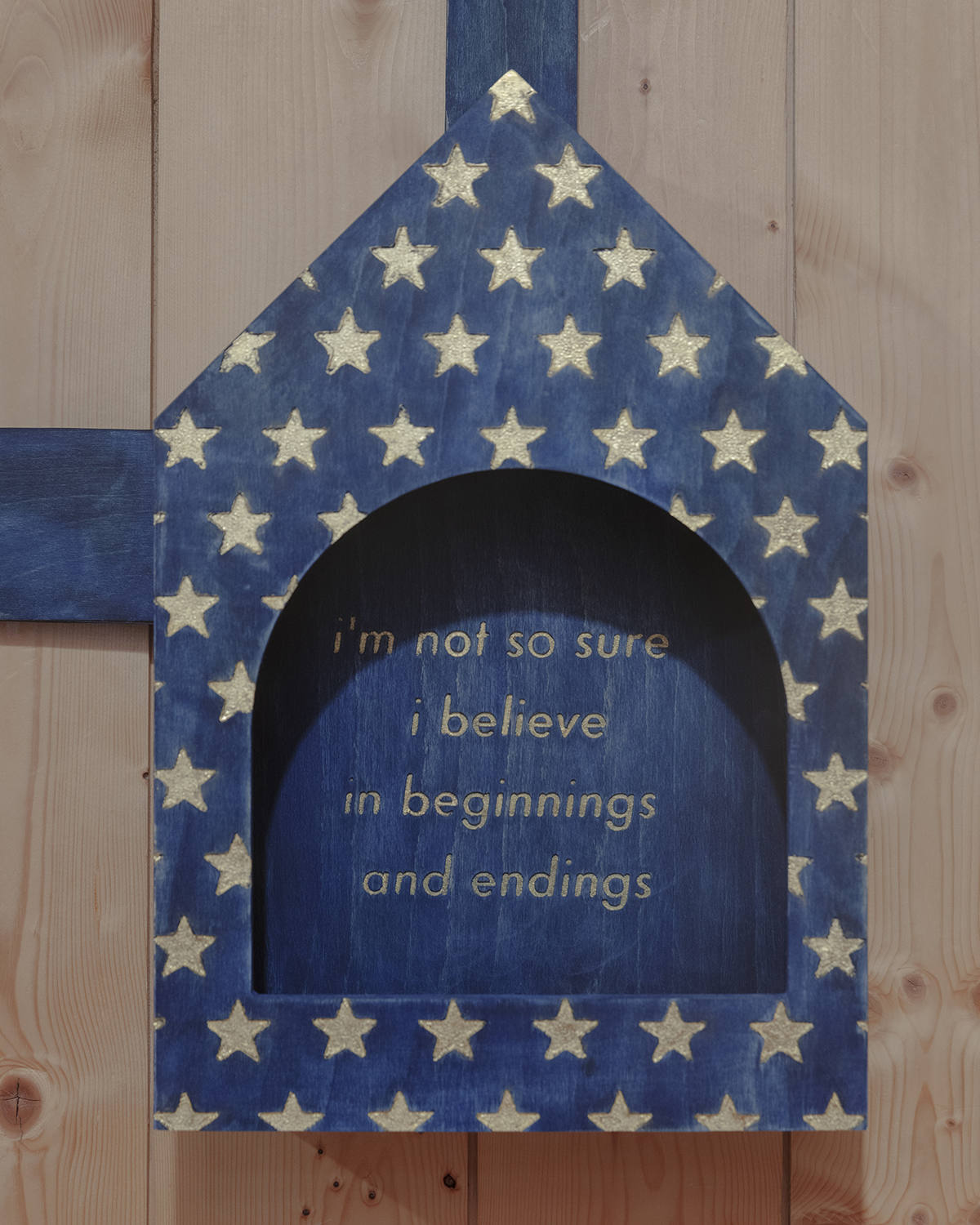

*installation view at Atchin Than; Willa Oksza, Muzeum Tatrzańskie w Zakopanem, Zakopane, PL; 2024


*installation view at The New Stage, National Theatre, Prague, CZ; 2025; commissioned by Ara Art
last summer i have
fallen in love madly
17 October 2024
Summer swimming pool Mičurín
Bratislava, Slovakia
space design/production: Gabriela Smetanová
sound: NaiKavols
voiceover: Jana Kovalčíková
texts: Ľuboš Kotlár, Gabriela Smetanová
text edit: Katarína K. Cvečková
graphic design: Ľuboš Kotlár
light design: Juraj Čech
catering: Štefan Sekáč
photo documentation: Leontína Berková
video documentation: Martin Toldy
*project was financially supported by Bratislava City Foundation and the Slovak Arts Council in the form of a stipend
Summer swimming pool Mičurín
Bratislava, Slovakia
space design/production: Gabriela Smetanová
sound: NaiKavols
voiceover: Jana Kovalčíková
texts: Ľuboš Kotlár, Gabriela Smetanová
text edit: Katarína K. Cvečková
graphic design: Ľuboš Kotlár
light design: Juraj Čech
catering: Štefan Sekáč
photo documentation: Leontína Berková
video documentation: Martin Toldy
*project was financially supported by Bratislava City Foundation and the Slovak Arts Council in the form of a stipend

I conceived the project "last summer i have fallen in love madly" as a performative multimedia installation in the space of a drained swimming pool. My work has long been concerned with concepts of non-normative time and space, emanating primarily from the field of queer theory. The period after the end of the summer season is associated with a cooling of the climate, an intense return to work and school duties, and seasonal affective disorder. The swimming pool, as a space primarily intended for public relaxation and/or sport, is often tied to a set of individual memories that are largely associated with childhood, family life and collective activities. In its emptied/non-functional form, it loses the purpose of its own existence and loses its justification. A popular public place becomes a dreary and disturbing space which in turn disturbs and/or poses a direct physical threat. It becomes a space that is inherently non-normative, and as a result has the potential to exist autonomously outside of established social patterns.
The installation in the swimming pool area is formally based on stage design. The original sketches for the project, which I have been gradually developing since October 2022, include objects installed directly in the pool area. These objects were partly based on the concept of scaffolding, construction, or reconstruction of the space. The installation was to include ladders and platforms into which glass panels, doors, lightboxes and other objects were embedded to imaginatively divide the space. Gradually I came to the conclusion that the conceptual framework of the whole project does not stand on the objects that I bring into the pool area.
The installation in the swimming pool area is formally based on stage design. The original sketches for the project, which I have been gradually developing since October 2022, include objects installed directly in the pool area. These objects were partly based on the concept of scaffolding, construction, or reconstruction of the space. The installation was to include ladders and platforms into which glass panels, doors, lightboxes and other objects were embedded to imaginatively divide the space. Gradually I came to the conclusion that the conceptual framework of the whole project does not stand on the objects that I bring into the pool area.
On the contrary, each new artifact in the space, although it adds a new contextual layer, is not a carrier of the main meaning itself. I decided to leave the pool space empty, filled only with the "necessary" technical equipment (i.e. light and sound) that directly encourage the expectation of performative action.
Around the pools, imaginary communities are formed. It is common that if you regularly visit a swimming pool close to where you live, you meet the same people, just like in cafés, fitness centres or even public transport. If the swimming pool area in its transformed form becomes emptied, its function of building an imaginary community can be restored precisely by embracing it as our own at every stage of its cycle. In its emptied form, we have the opportunity to find new uses for it, new ways of spending time together and thus unconventional ways of establishing and strengthening social relations.
Today, October 17, is the brightest full supermoon of 2024. The October full moon symbolizes the definitive end of the summer season, which is why it is also called the "Hunter's Moon" in Western culture, and is associated with the preparation of supplies for the winter (however, it carries various other names and meanings in different cultures). Today's event can therefore be understood as an imaginary closing of the summer season and its related activities, or, on the contrary, it can be understood as an opening of the collective imagination in connection with a space that has ceased to serve us at first glance in its current state.
Around the pools, imaginary communities are formed. It is common that if you regularly visit a swimming pool close to where you live, you meet the same people, just like in cafés, fitness centres or even public transport. If the swimming pool area in its transformed form becomes emptied, its function of building an imaginary community can be restored precisely by embracing it as our own at every stage of its cycle. In its emptied form, we have the opportunity to find new uses for it, new ways of spending time together and thus unconventional ways of establishing and strengthening social relations.
Today, October 17, is the brightest full supermoon of 2024. The October full moon symbolizes the definitive end of the summer season, which is why it is also called the "Hunter's Moon" in Western culture, and is associated with the preparation of supplies for the winter (however, it carries various other names and meanings in different cultures). Today's event can therefore be understood as an imaginary closing of the summer season and its related activities, or, on the contrary, it can be understood as an opening of the collective imagination in connection with a space that has ceased to serve us at first glance in its current state.
Ľuboš Kotlár
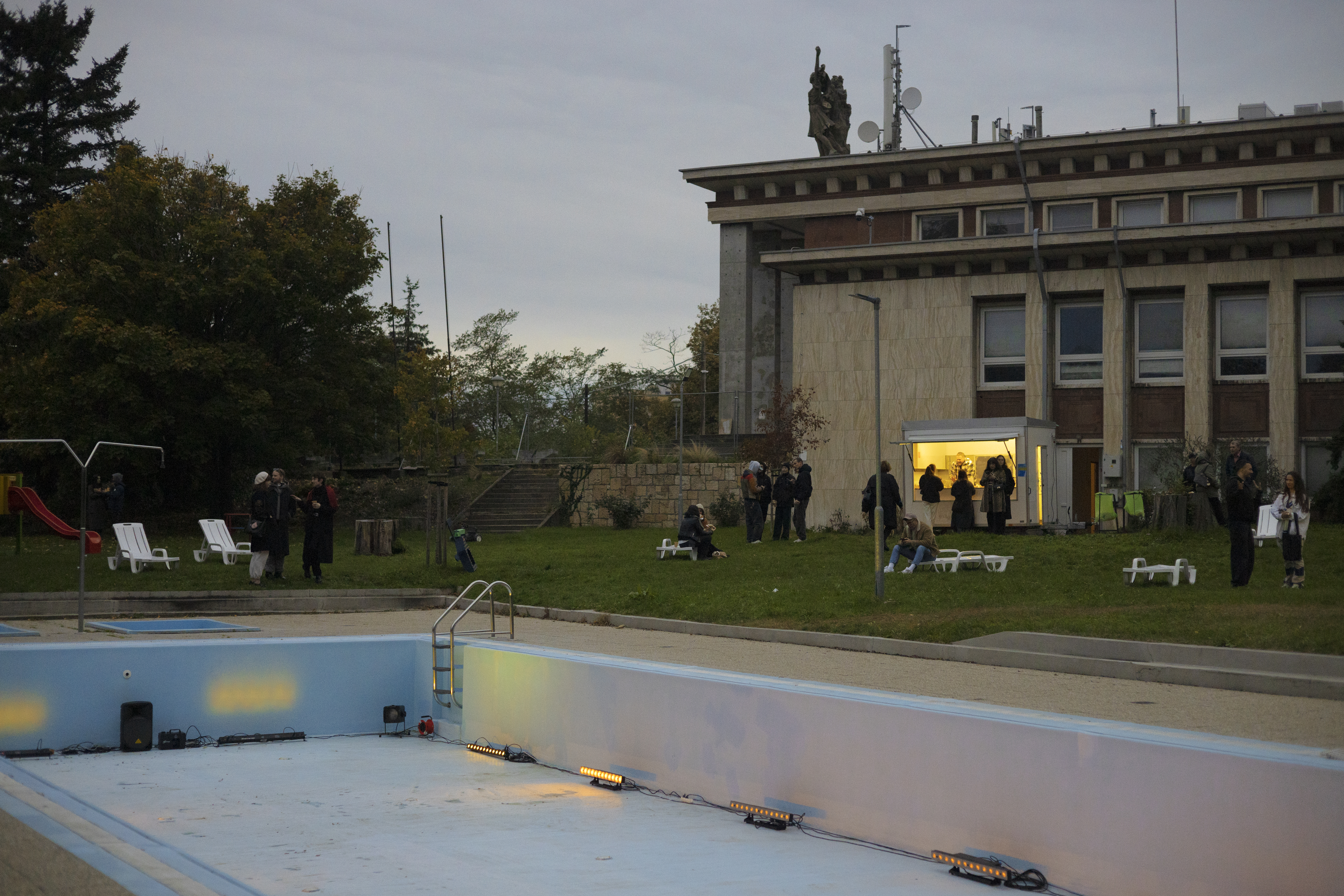


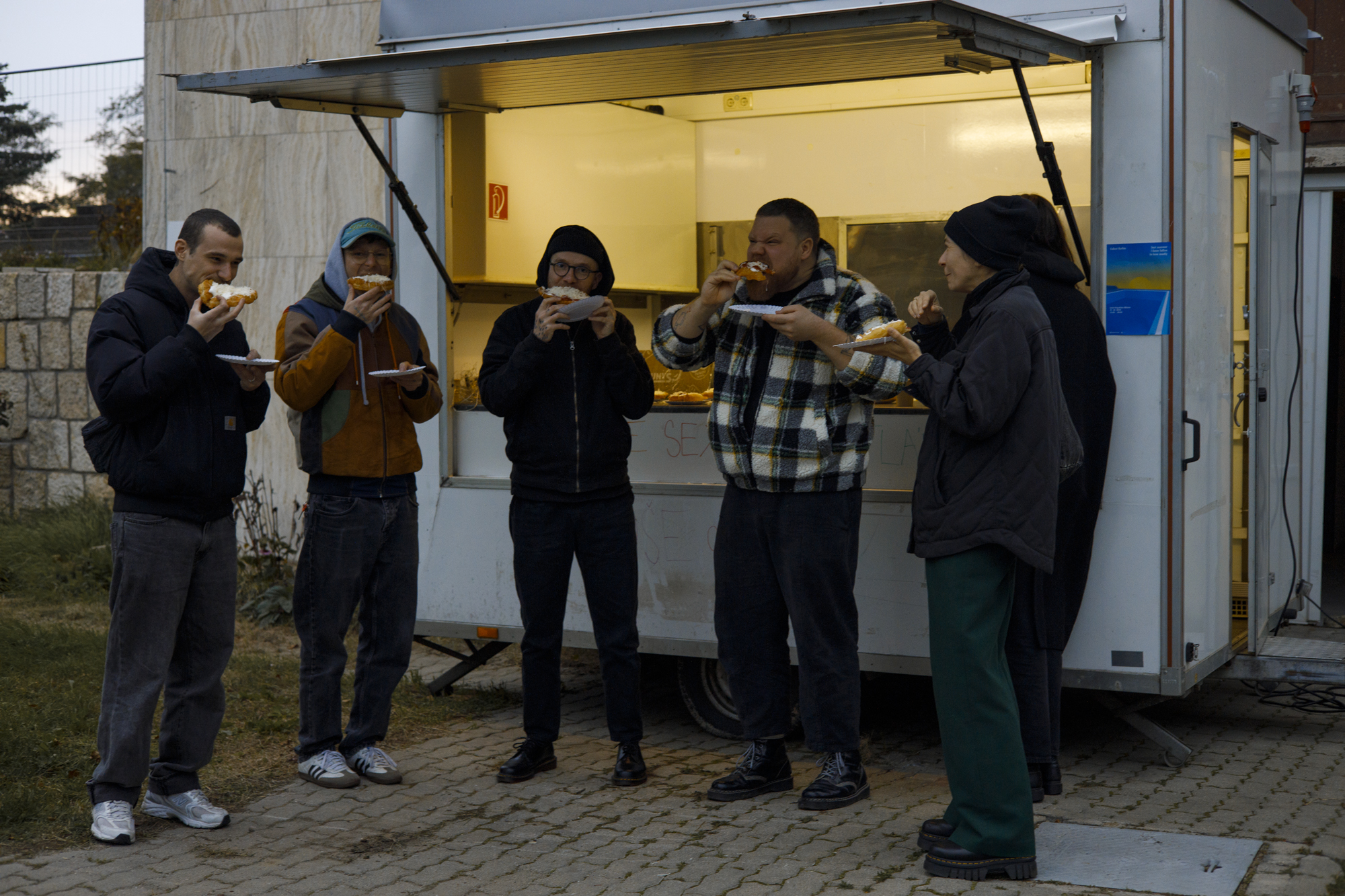

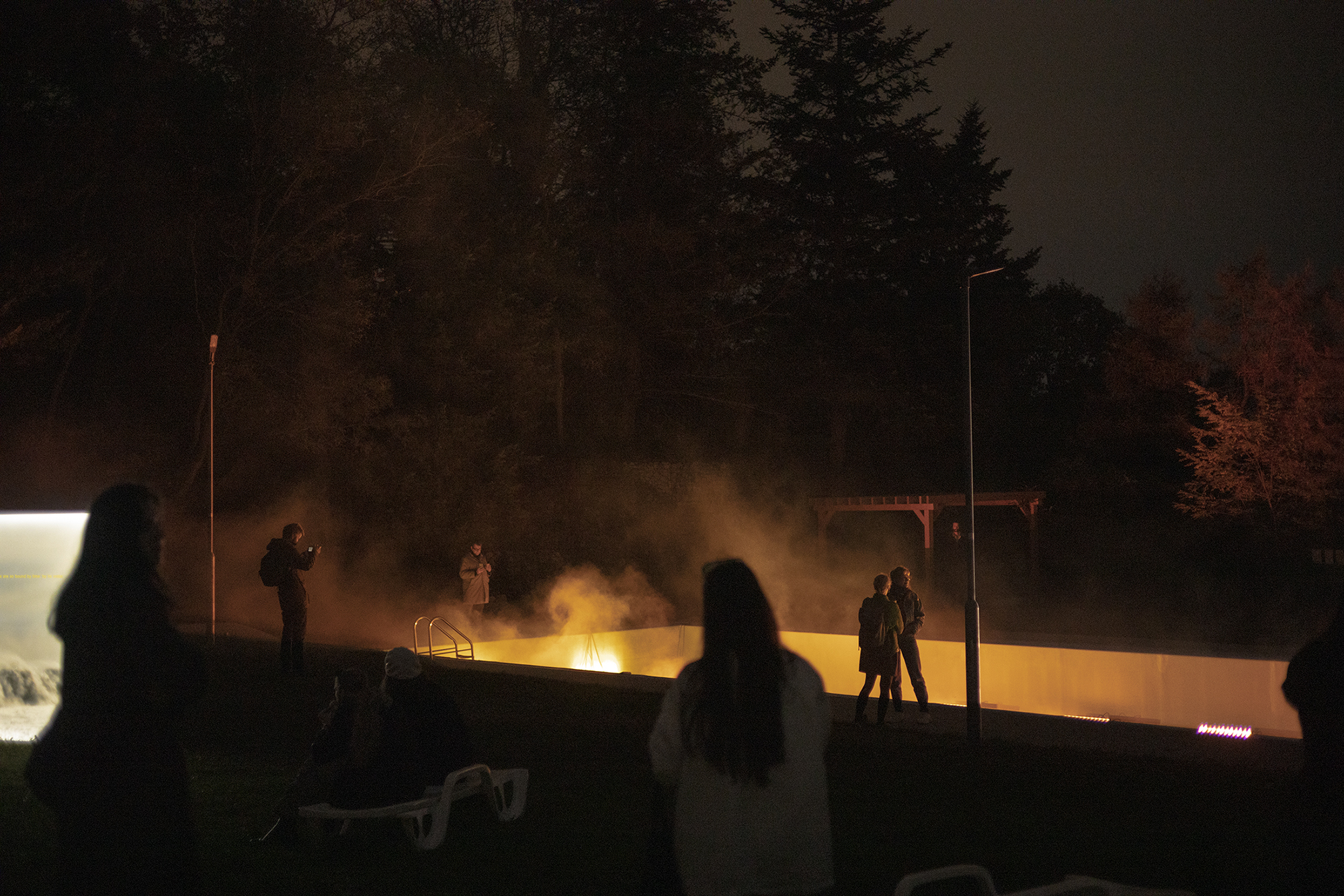



untitled (climber)
object
150x200x50cm
analog photography, digital print, stainless stell, plexiglass, LED
2024
150x200x50cm
analog photography, digital print, stainless stell, plexiglass, LED
2024
object production: holyhotpunx
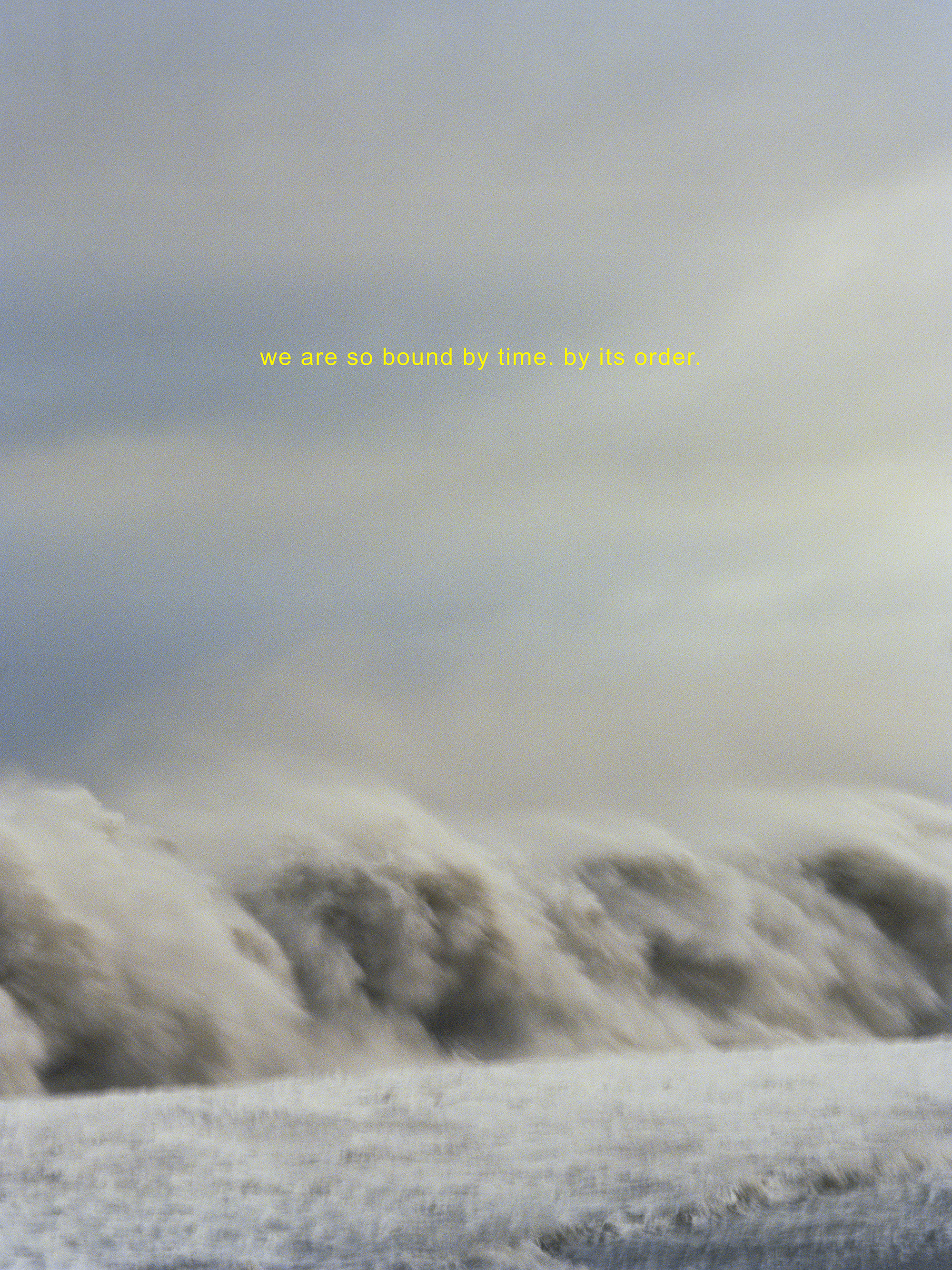
Untitled (Climber) is an object that operates at the intersection of image, structure, and embodied perception. The work is defined by a large-scale printed image encased within a surrounding metal construction. The image captures waves breaking along a shoreline, frozen in a moment of motion. While the scene initially evokes romantic associations, it simultaneously carries an undercurrent of unease. Through this ambivalence, the artist draws attention to climate catastrophe, the regenerative and destructive capacities of nature, and humanity’s persistent inability—or refusal—to either protect the natural world or extricate itself from its consequences. Superimposed on the image is the phrase “we are so bound by time. by its order.” Quoted from Denis Villeneuve’s film Arrival (2016), the text gestures toward the present moment while invoking the disproportion between the brevity of individual human existence and the vast temporal scale of geological and cosmic time. In this context, the quotation underscores the instability of linear conceptions of time and space, exposing the limits of human perception and understanding. In contrast to the fluid, organic imagery, the surrounding metal structure is sharp, austere, and markedly industrial. Its defining element is a ladder that frames the image from behind. The structure is unmistakably anthropocentric in scale and design: its intended mode of use is immediately legible, and the viewer can almost physically sense the coldness of metal against the skin. As such, the object anticipates performative engagement—an action that is implied rather than fully realized. Although the form suggests playfulness and interaction, it ultimately speaks to absence, restraint, and deferred action. Interpretation of the object remains inherently subjective, yet it is clearly conceived as a physical confrontation between viewer and structure. Exceeding the viewer’s bodily dimensions, the work invites reflection not only through spatial presence but also through self-recognition: the plexiglass surface reflects the viewer’s image, implicating them within the work’s conceptual framework.
(The ladder is, notably, climbable.)
This object was originally presented during site/time-specific event “last summer i have fallen in love madly” that took place on October 17 2024 at Summer swimming pool Mičurín in Bratislava, Slovakia. It was funded by Slovak Arts Council in a form of stipend and Bratislava City Foundation.
(The ladder is, notably, climbable.)
This object was originally presented during site/time-specific event “last summer i have fallen in love madly” that took place on October 17 2024 at Summer swimming pool Mičurín in Bratislava, Slovakia. It was funded by Slovak Arts Council in a form of stipend and Bratislava City Foundation.

*installation view at OFF Bratislava; OD Prior, Bratislava, SK; 2025
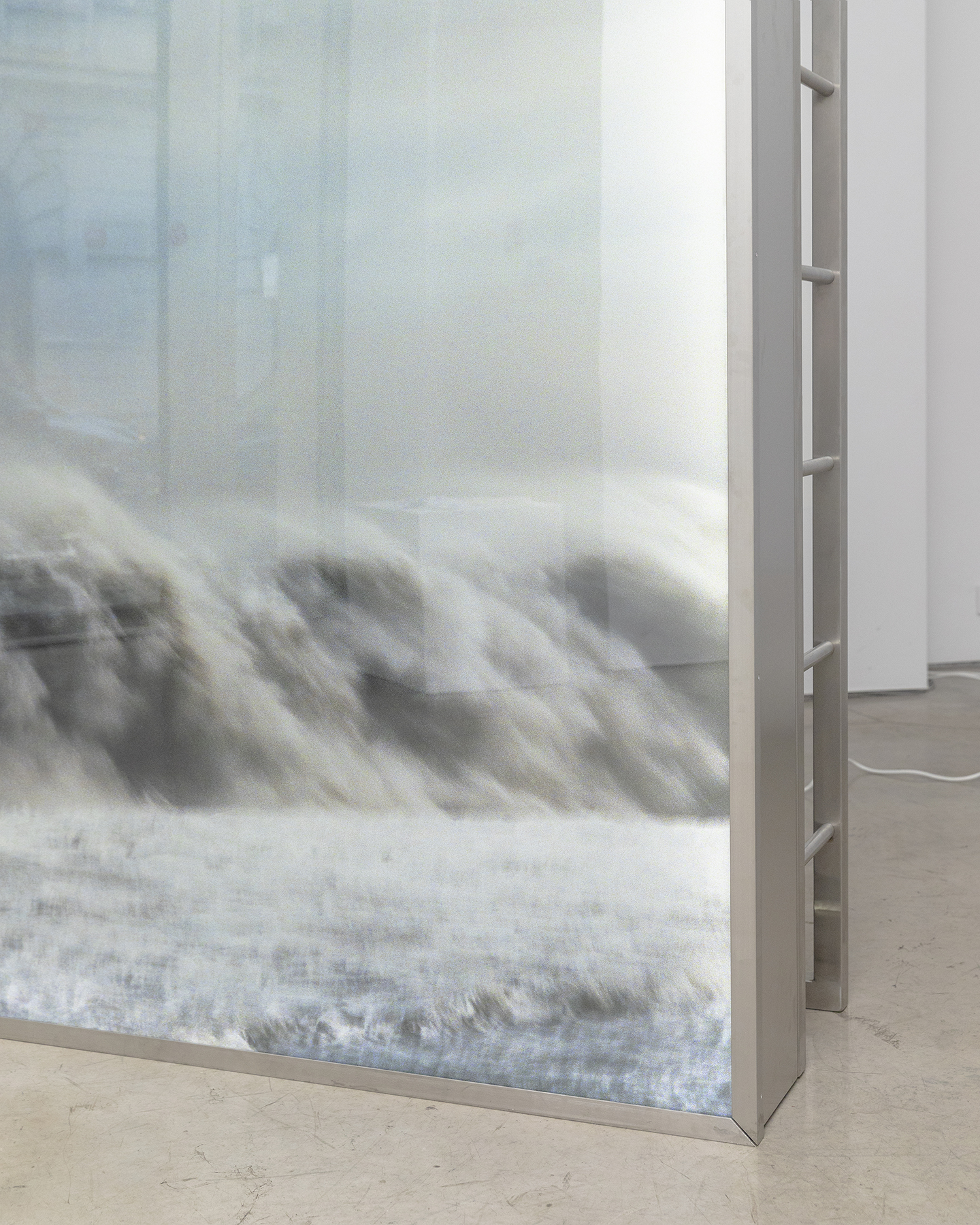
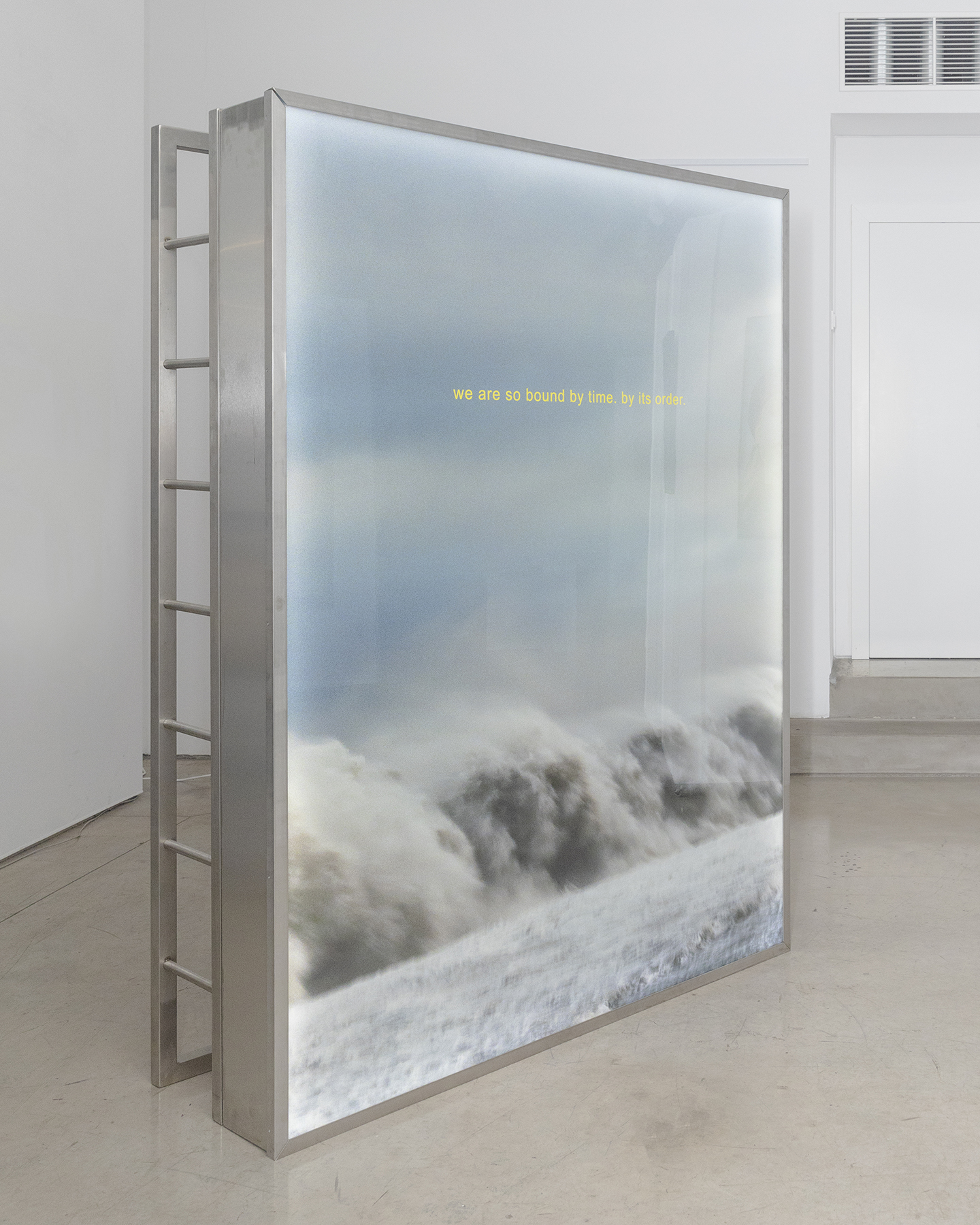
*installation view at Under a Shared Fragile Roof; Slovenský institut Praha, Prague, CZ; 2024
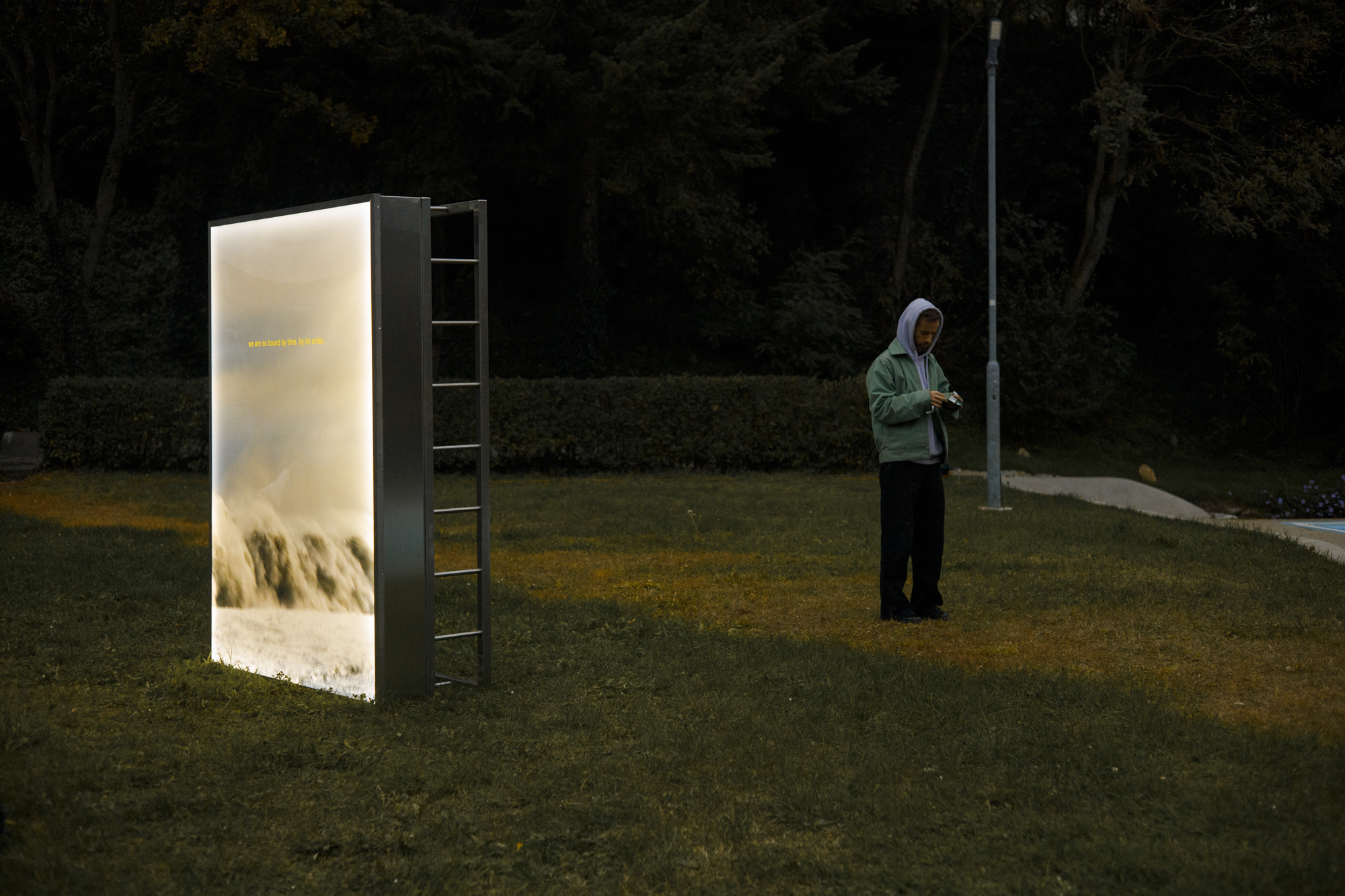
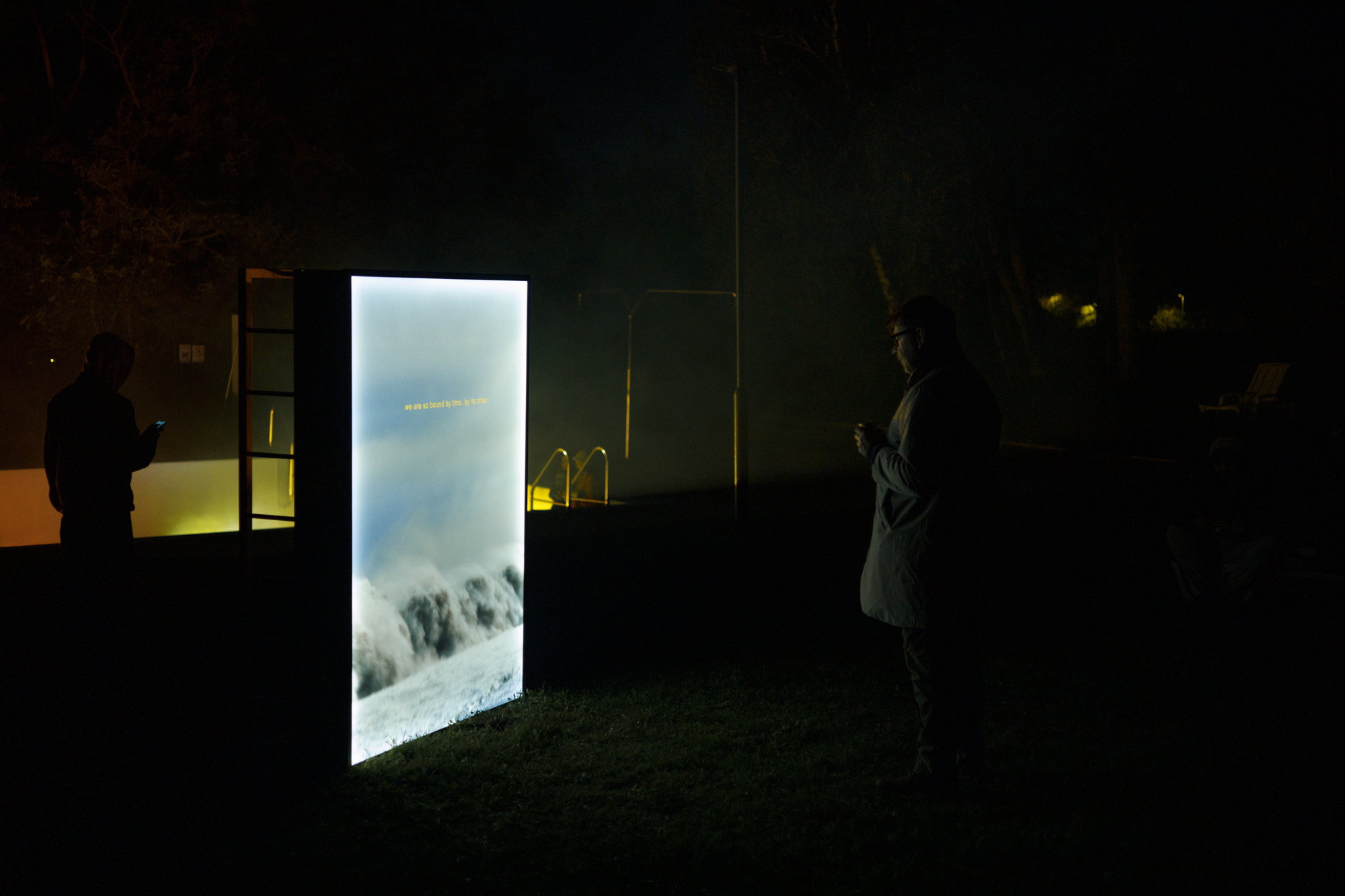
*installation view at last summer i have fallen in love madly; Summer swimming pool Mičurín, Bratislava, SK; 2024
something's wrong
and i can feel it
9 July – 8 September 2024
Nová synagóga
Žilina, Slovakia
exhibition design: Gabriela Smetanová
sound: NaiKavols
texts: Erik Vilím, Ľuboš Kotlár
graphic design: Dávid Koronczi
photo documentation: Richard Köhler, Ľuboš Kotlár
*project was financially supported by Slovak Arts Council and Academy of Fine Arts and Design in Bratislava
Nová synagóga
Žilina, Slovakia
exhibition design: Gabriela Smetanová
sound: NaiKavols
texts: Erik Vilím, Ľuboš Kotlár
graphic design: Dávid Koronczi
photo documentation: Richard Köhler, Ľuboš Kotlár
*project was financially supported by Slovak Arts Council and Academy of Fine Arts and Design in Bratislava
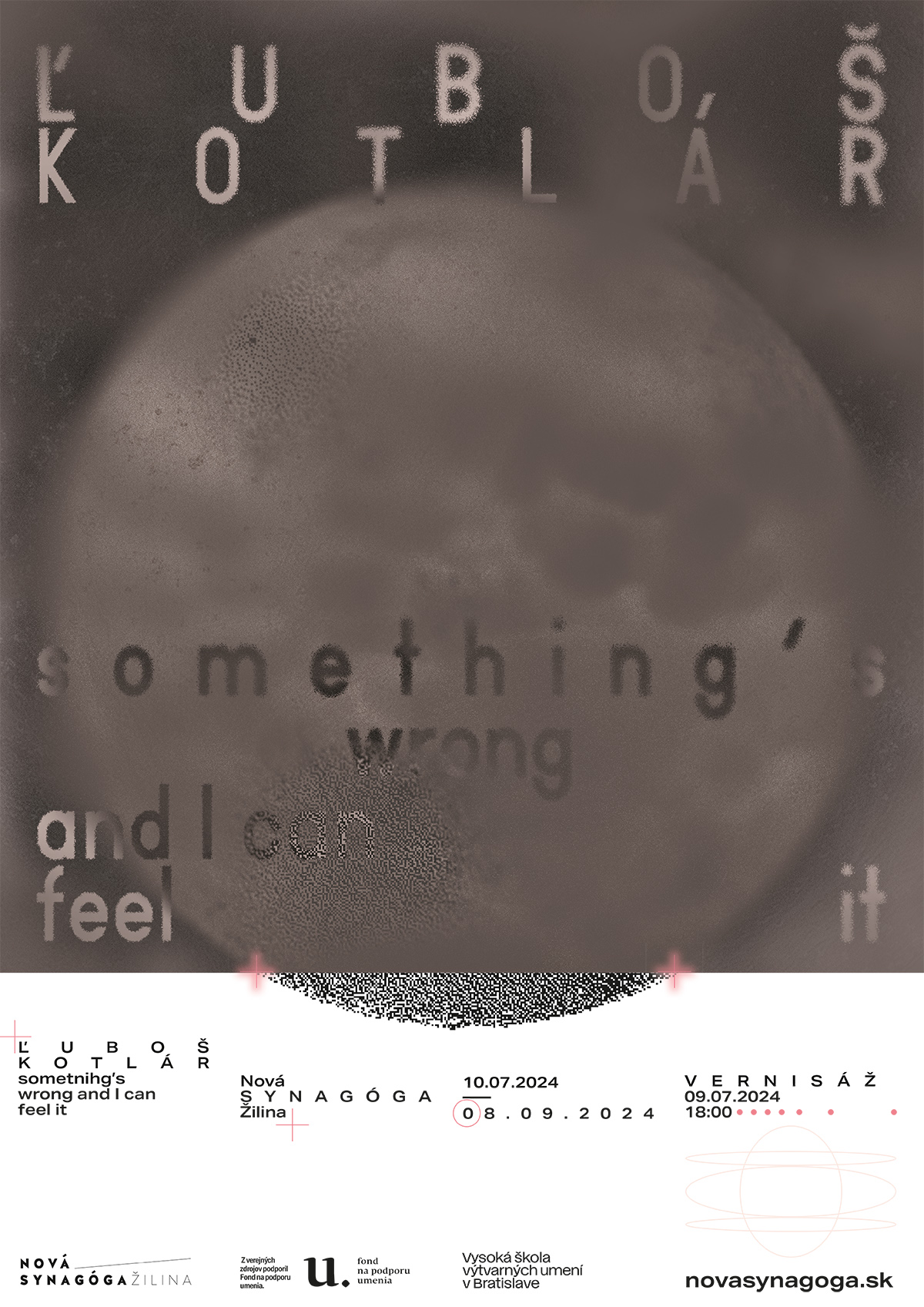
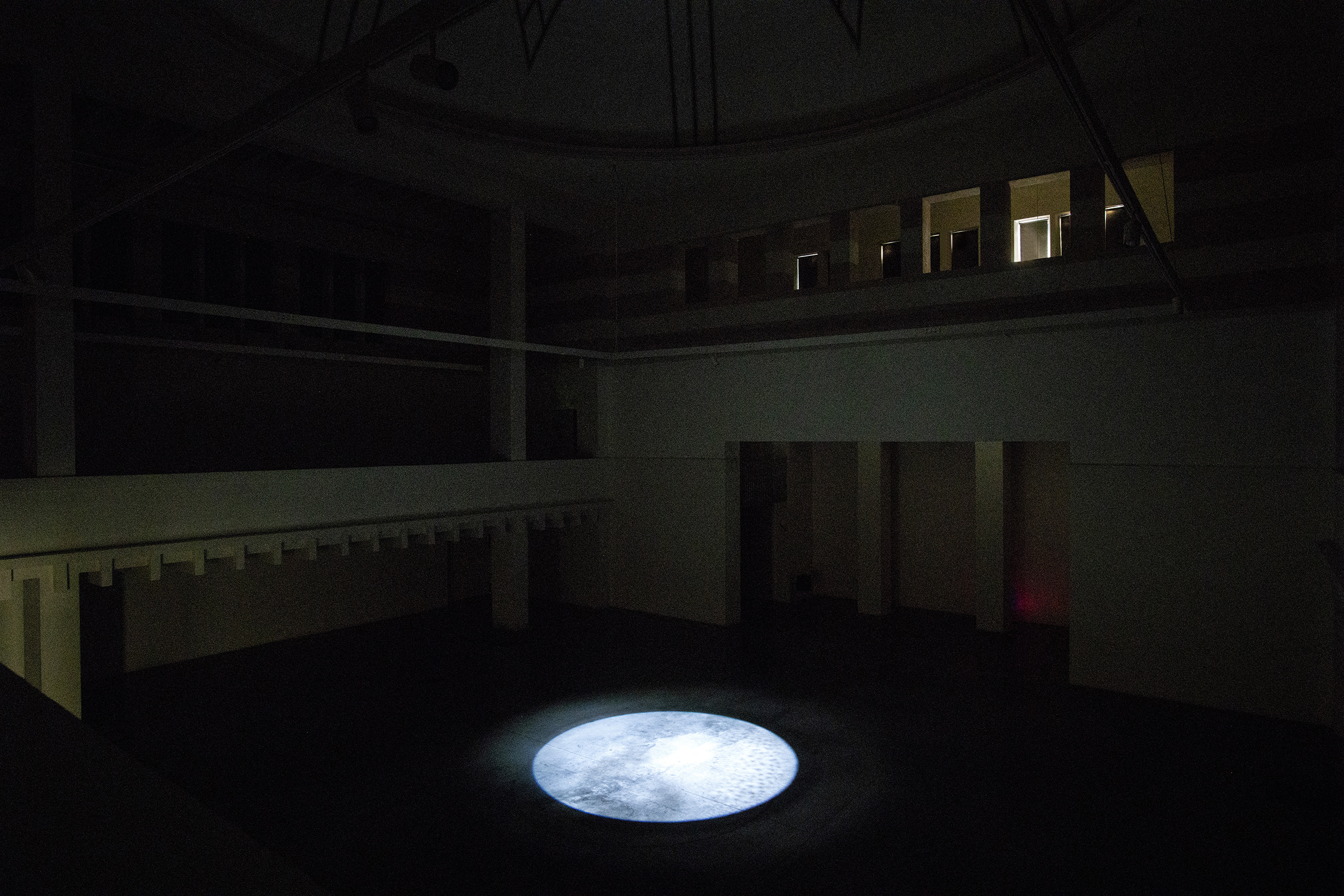
For several years now, when writing texts for my projects, I have often used reference to the multiplicity of crises we are currently experiencing. The most characteristic feature of the present time is uncertainty, both on a personal and on a societal level, as a result of which we are experiencing collective anxiety. In relation to these facts, I have long been concerned with the concept of temporality, whereby, with an awareness of an uncertain future, we focus our attention on the present moment that is currently happening, in contrast to a clear vision and planning of events that are yet to come.
The exhibition "something's wrong and i can feel it" uses the given architectural elements of the New Synagogue space. By uncovering the opening that is present in its dome, if the space is sufficiently darkened, the image is projected onto the floor directly beneath the dome, recontextualizing the building as a "camera obscura," a simple optical device that predates the invention of the photographic apparatus. The projected image depicts atmospheric changes in the sky above the New Synagogue building, with the resulting image being dynamic and transforming over time beyond the artist's control. The perception of a given image requires a certain degree of concentration on the part of the viewer and a physical adaptation to the new conditions.
The exhibition "something's wrong and i can feel it" uses the given architectural elements of the New Synagogue space. By uncovering the opening that is present in its dome, if the space is sufficiently darkened, the image is projected onto the floor directly beneath the dome, recontextualizing the building as a "camera obscura," a simple optical device that predates the invention of the photographic apparatus. The projected image depicts atmospheric changes in the sky above the New Synagogue building, with the resulting image being dynamic and transforming over time beyond the artist's control. The perception of a given image requires a certain degree of concentration on the part of the viewer and a physical adaptation to the new conditions.
The process of observing the sky and celestial events is directly linked to the objects installed in the towers of the New Synagogue. The fountain with the bucket and the moon refers to the Romani custom of bowing to the new moon, when men "carried a bucket of water and small money in the bucket. They believed that as the moon grew, so would their wealth." (Lacková, Elena. I was born under a lucky star. 2023).
The marble panels installed in the second tower are in turn engraved with inscriptions that come from the astrology app installed in my phone, which sends me a thought (or a mantra) for each specific day based on my birth chart. These objects draw attention to old versus new "superstitions," various forms of ascribing meaning to cosmic objects and mysticism that persist in transformed forms across time in various communities, and whose popularity not only sustains, but (quite paradoxically) continues to rise.
The installation "something's wrong and i can feel it" is intended to provide the audience with a space for slowing down and introspection, a safe space for bringing awareness to physical experience and perception of the present moment, impermanence and ephemerality. Feel free to throw a few pennies to the fountain and read some of the motivational thoughts. Everything will be all right.
The marble panels installed in the second tower are in turn engraved with inscriptions that come from the astrology app installed in my phone, which sends me a thought (or a mantra) for each specific day based on my birth chart. These objects draw attention to old versus new "superstitions," various forms of ascribing meaning to cosmic objects and mysticism that persist in transformed forms across time in various communities, and whose popularity not only sustains, but (quite paradoxically) continues to rise.
The installation "something's wrong and i can feel it" is intended to provide the audience with a space for slowing down and introspection, a safe space for bringing awareness to physical experience and perception of the present moment, impermanence and ephemerality. Feel free to throw a few pennies to the fountain and read some of the motivational thoughts. Everything will be all right.
Ľuboš Kotlár
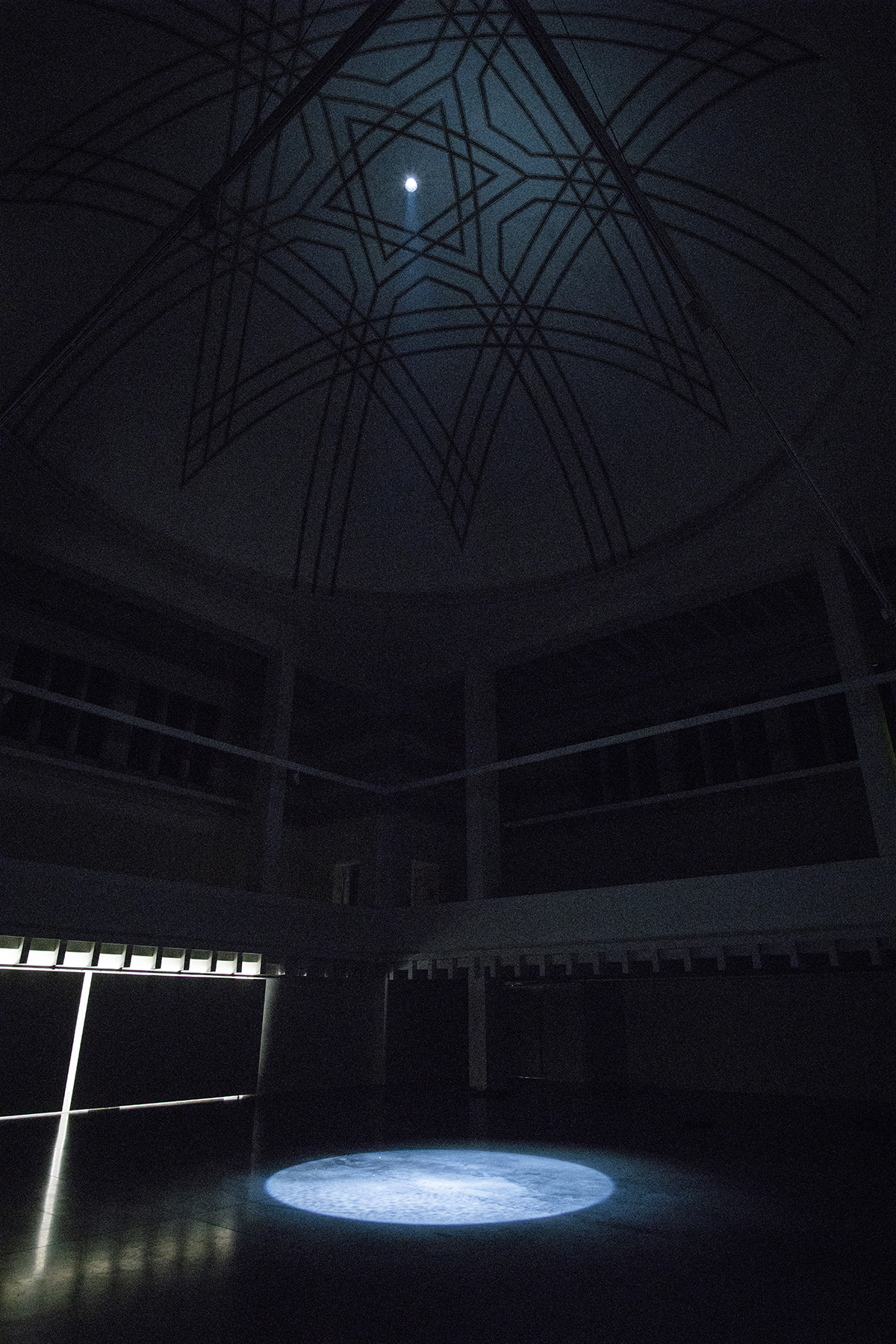
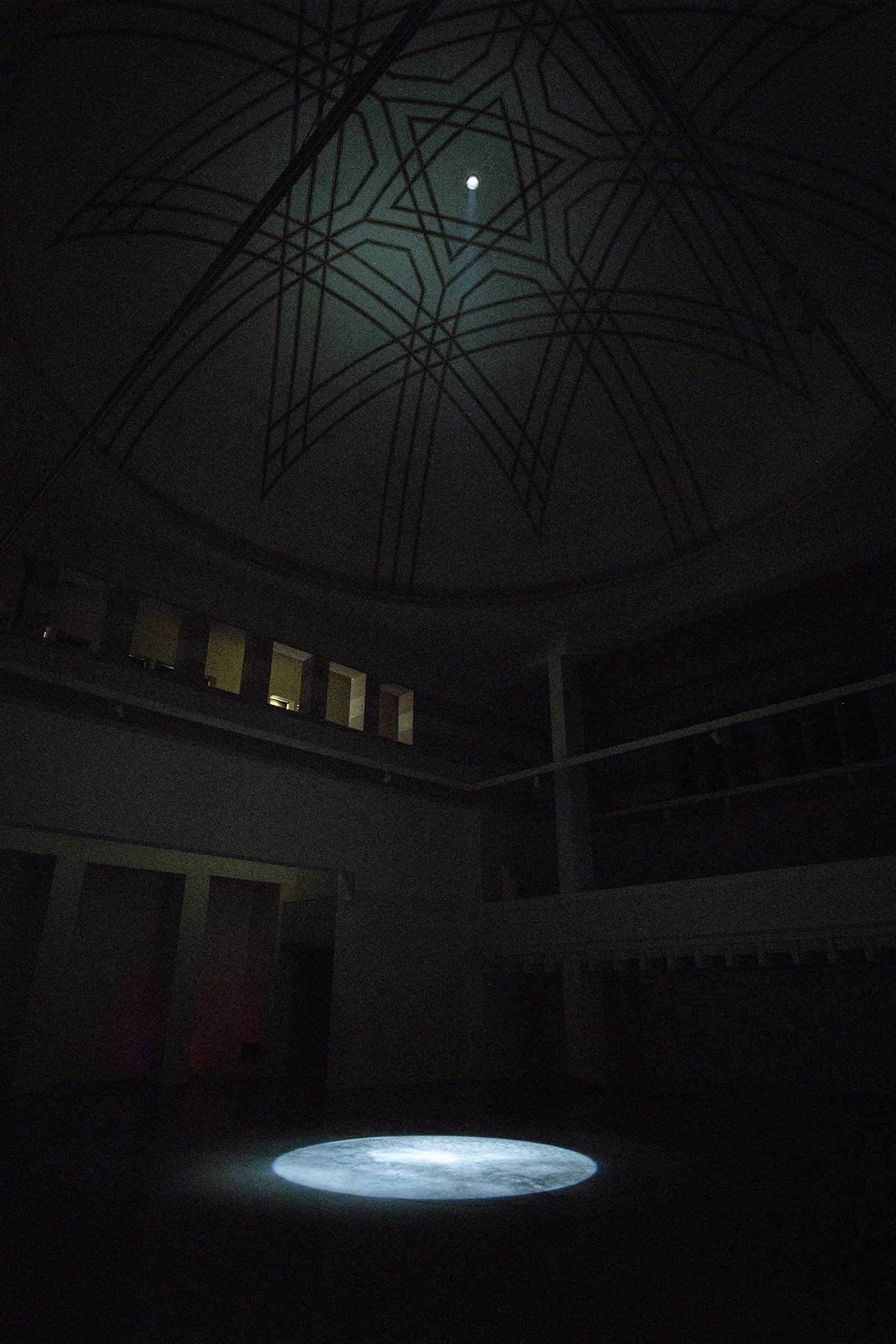
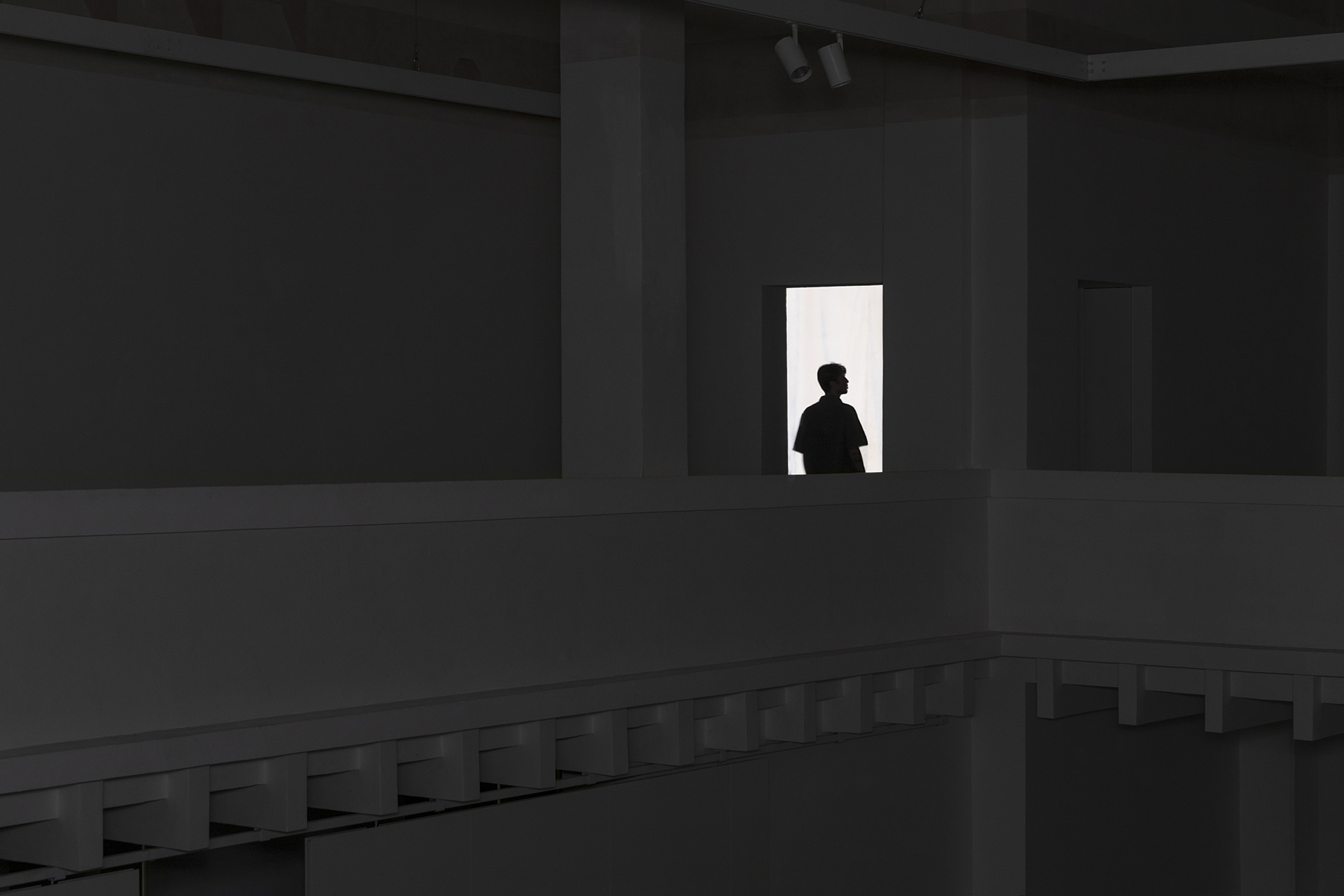
About words beggining with P
I have previously used the term perception many times within my research publications. I must admit that I have been trying to avoid it, perhaps precisely due to its academic tone. If we stopped or are about to stop by the solo exhibition of Ľuboš Kotlár placed in Žilina´s Nová synagóga, it is worth embracing this term again after a certain time.
The concept of perception is best understood if we evalue it with the help of another term - perspective. Perception is not more than receiving certain data through our sensory endings. There is something uncontrollable in this process of "absorption" of the surroundings, a kind of flow - pure seeing or hearing right here, right now and in this environment.
Even these words are slowly pouring into you. Your eyes register the contrast between the white paper and the black font called Lucida Grande. Based on this data, you can compose successive sentences. Perception is therefore "this" manifestation of the world - perception is a stream, by which the World flows into us.
I have previously used the term perception many times within my research publications. I must admit that I have been trying to avoid it, perhaps precisely due to its academic tone. If we stopped or are about to stop by the solo exhibition of Ľuboš Kotlár placed in Žilina´s Nová synagóga, it is worth embracing this term again after a certain time.
The concept of perception is best understood if we evalue it with the help of another term - perspective. Perception is not more than receiving certain data through our sensory endings. There is something uncontrollable in this process of "absorption" of the surroundings, a kind of flow - pure seeing or hearing right here, right now and in this environment.
Even these words are slowly pouring into you. Your eyes register the contrast between the white paper and the black font called Lucida Grande. Based on this data, you can compose successive sentences. Perception is therefore "this" manifestation of the world - perception is a stream, by which the World flows into us.
The perspective is radically different, it is aimed at something, it is a specific view. Perspective changes the framework of what we see. While the perception is only one, constantly passing, happening, we can take many perspectives on it. We can observe one thing from several angles and always see it in a different perspective. The camera is an example of this. You simply move it and it will stop this "flow" at your command. Astronomers recently took another photo of the black hole in the M87 galaxy, taking a new perspective, but despite this, the image is very similar to the previous one from 2019. However, there is definitely a small difference in it, which has its own scientific value. But let's leave that aside for now.
If we can comprehend this difference between the words perception and perspective clearly, we can now ask ourselves a simple question - where are we at in the work of Ľuboš Kotlár? Do we perceive, accept this flow, the flowing sky, or do we take perspective? Would our perspective be different if we arrived on a different day? And do we need a perfect image on the floor of Nová synagóga in Žilina, if our "smart" phones can master that?
If we can comprehend this difference between the words perception and perspective clearly, we can now ask ourselves a simple question - where are we at in the work of Ľuboš Kotlár? Do we perceive, accept this flow, the flowing sky, or do we take perspective? Would our perspective be different if we arrived on a different day? And do we need a perfect image on the floor of Nová synagóga in Žilina, if our "smart" phones can master that?
Erik Vilím
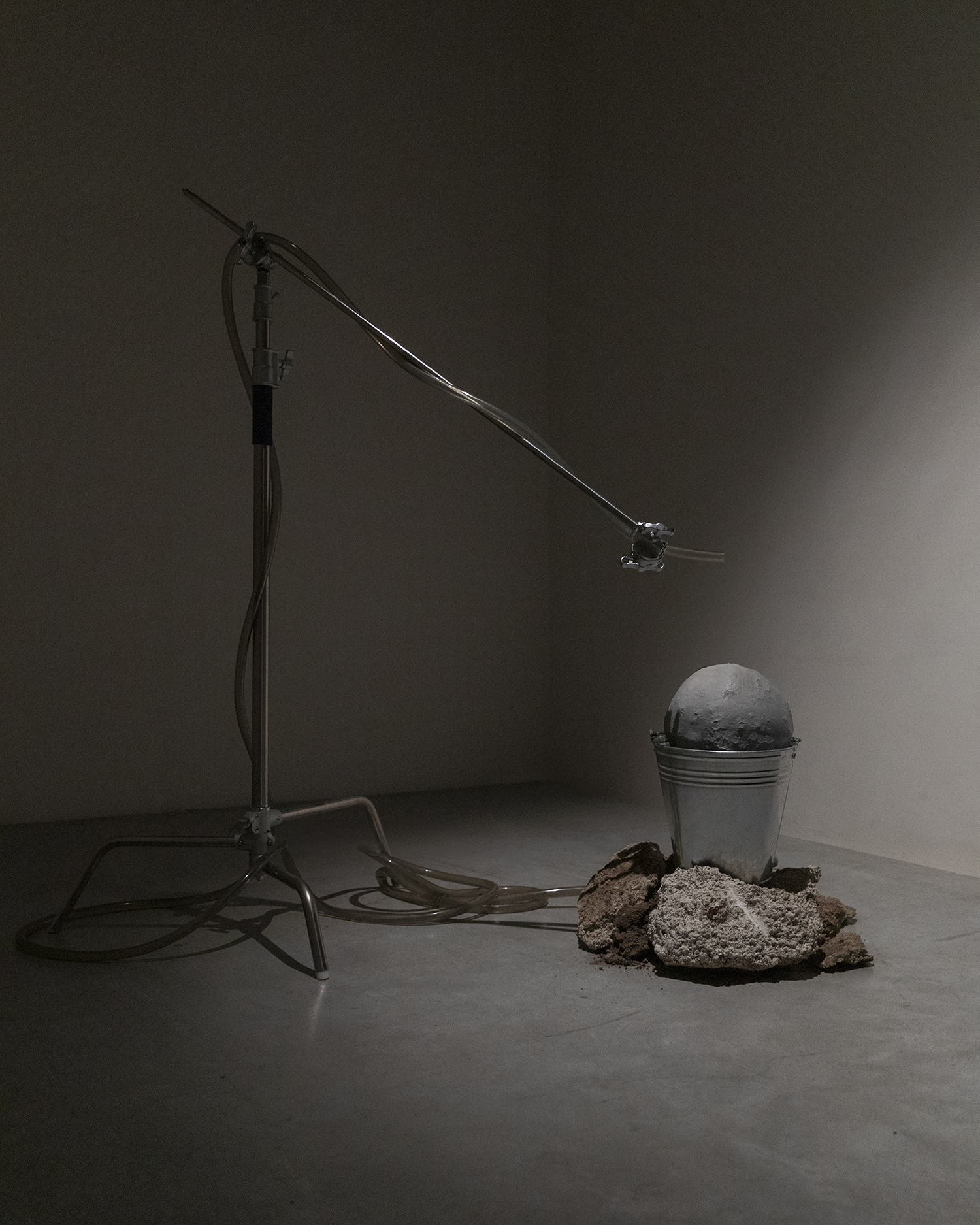
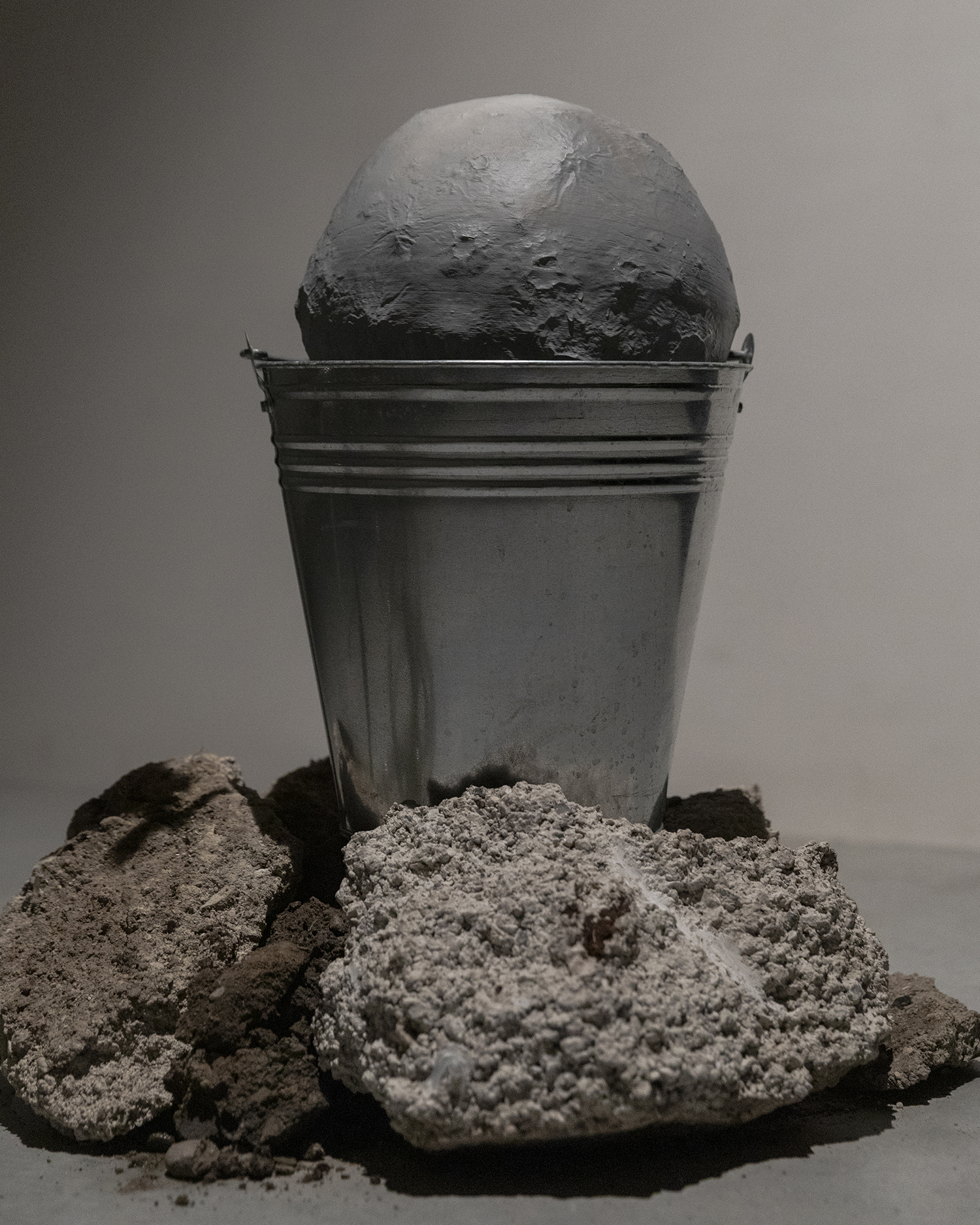
Untitled (Fountain)
various size
3D print, found metal bucket, found rubble, metal tripod, PVC hose, stepper motor, pump
2024
various size
3D print, found metal bucket, found rubble, metal tripod, PVC hose, stepper motor, pump
2024
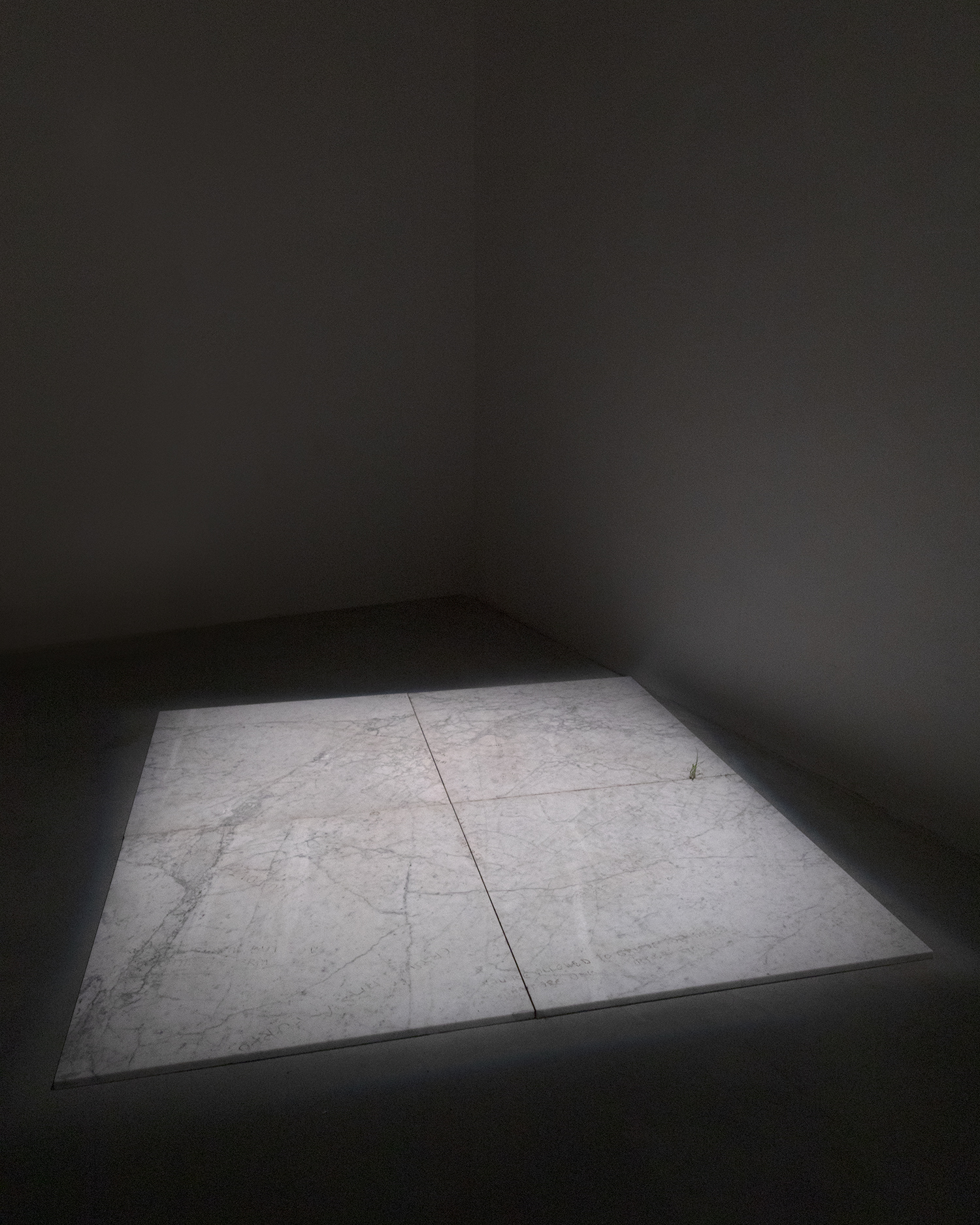
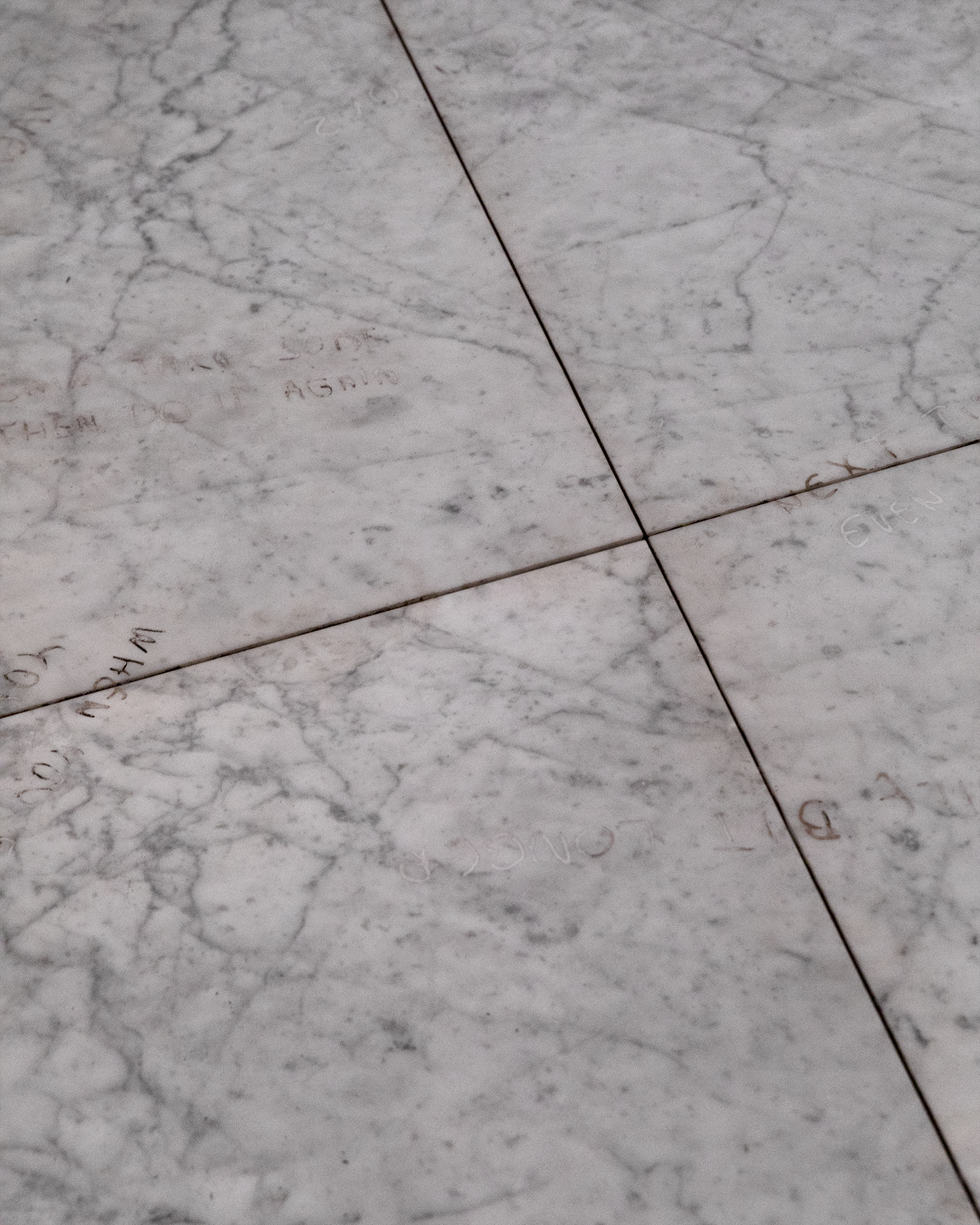
Untitled (Lapidarium)
200x200cm
engraved marble, dirt, found plant
2024
200x200cm
engraved marble, dirt, found plant
2024
sugar
processual installation in collaboration with Robert Gabris
21 July – 15 September 2022
Prague, Czech republic
curator: Piotr Sikora
* within Biennale Matter of Art
* within Biennale Matter of Art
We are looking at sugar as a significant commodity in European history - while in the past sugar was reserved for upper classes, today it is the poor that rely on these cheap, easy-to-get and easy-to-process ingredients. As a result, these disadvantaged population groups suffer from health consequences, such as a widely spread diabetes in Roma settlements in Slovakia. For casts, we used our own fists, bringing the Roma Queer body into an institution in both metaphorical and physical form. A fist can be understood in several readings - is it a hand of revolution, an aggressive beating hand, or a sexual practice hand? Without any conservation, these objects change over time without our control, creating new forms and contexts. We explore collective and individual inclusion in political systems and ourselves, questioning identity in cultural contexts and societal inclusion. Our work aims to liberate from power structures. We, as queer Roma identities, need to create open participatory spaces for imagining collective identities and futures. We question the concept of a collective body in art institutions. Our bodies are tools absorbing, accepting, resisting complexities, reflecting individual and collective experiences. We form a collective body from diverse perceptions, creating chosen families and rules for stability. We practice resilience, merging into each other like liquid.
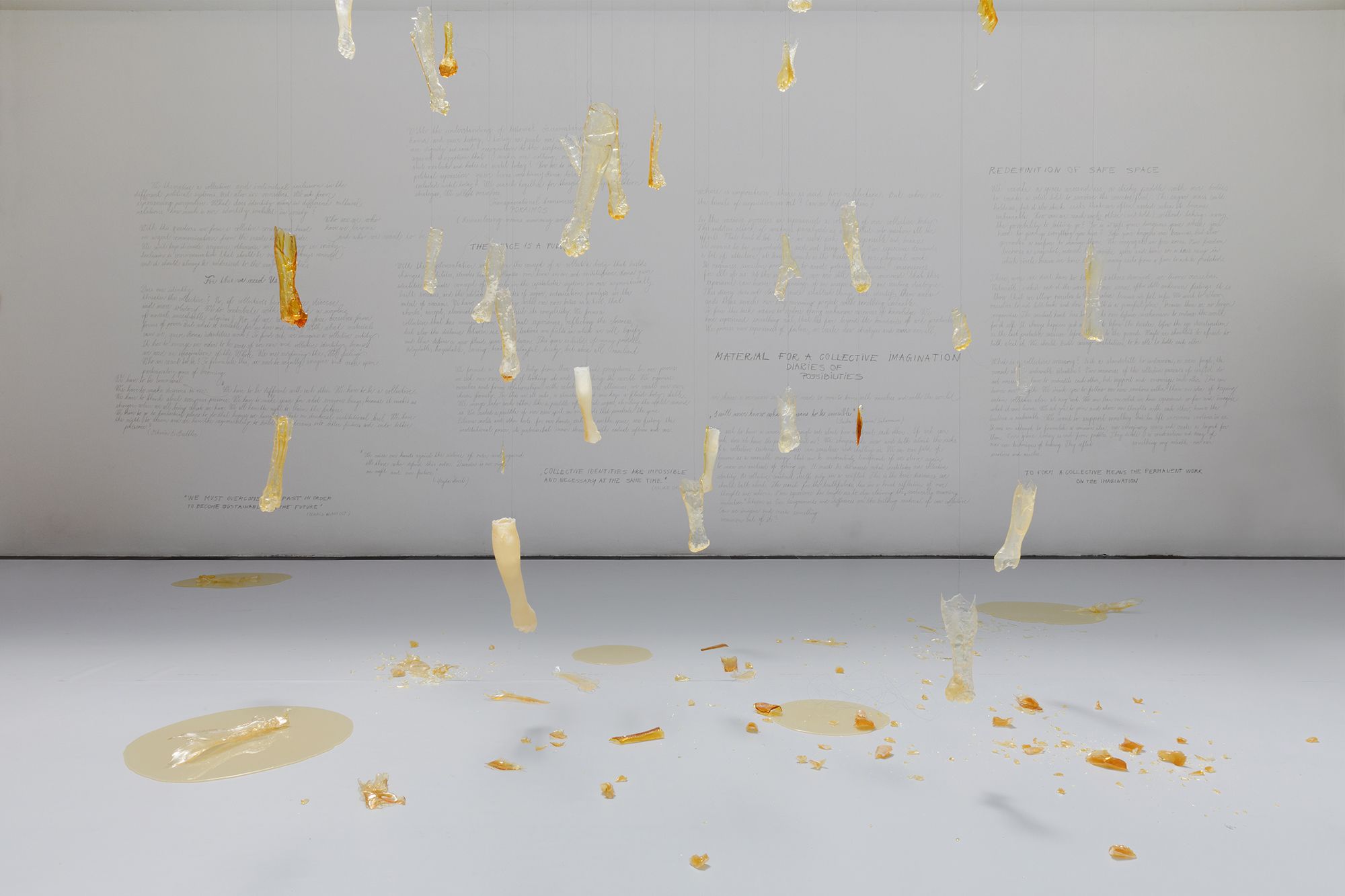
(transcript of the text within the installation)
MATERIAL FOR COLLECTIVE IMAGINATION
1. DIARIES OF POSSIBILITIES
We thematize a collective and individual inclusion in the different political systems, but also in ourselves. We ask from experiencing perspective: What does identity mean in different cultural relations, how much is our identity included in society? Who are we, who have we become and who do we want to be? With these questions we form a collective consciousness based on urgent communication from the inside to the outside. We can't keep it inside anymore, otherwise we don't belong in society. Inclusion is communication that should be ongoing, always renewed, and it should always be addressed to the major societies.
Puddle: For this we need Us.
Does one's identity threaten the collective? No, if collectives become more diverse and more solidary. Do we contribute with our work a surplus of unreal, unrealizable utopias? No, if we collectively free ourselves from forms of power. But what is available for us here and now? With what materials can we, queer Roma identities work? To find out, we imagine a collective entity. It has to emerge in order to be sure of our own and collective identity, because we need an imagination of the Whole. We are redefining the "we feeling." Who we want to be? To formulate this, we need to urgently imagine and create open participatory spaces of becoming.
"We have to be different with each other. We have to be a collective, we have to be communal. We have to make decisions as one. We have to think about everyones presence. We have to make space for what everyone brings, because it makes us stronger, when we all bring what we have. We all have the right to claim the future. We have to create spaces that allow us to envision beyond what we have been told is possible. To truly imagine justice. We have to go to fantastical places to do that because we haven't see that on a structural institutional level. And yet, we know this is possible because we can look into history and we have seen again and again the fact that folks had dreamt about possible justice. And they have changed the entire world to makes those dreams reality. We have the right to dream and we have the responsibility to build those dreams into better futures and into better presence". (Octavia E Buttler)
With the understanding of historical circumstances of Roma and queer history, today we push our values of dignity and social recognition to the social surface. How do we fight against a negation that makes one nothing, erases us from history and overlooks and hates us until today? How are we to stand upright when political repression queer trans non-binary Roma bodies are systematically excluded until today? We search together for thought and implementation strategies, We collect ourselves.
Puddle: Transgenerational transmission, poraimos.
Puddle: Remembering means mourning work.
Puddle: The killing of the unique, the denial of love, is the worst form of defense against mourning. A society that cannot mourn treats the things it uses, the nature it lives on, ultimately itself without love. (Donald Winnicott)
2. THE SPACE IS A PUDDLE
With the implementation we question the concept of a collective body that builds, changes, modulates, elevates but also collapses over time in an art institution. Roma Queer Identities negotiate concepts of poverty in the capitalistic system in our asymmetrically built societies, and the addictive attributes of sugar, intoxication, paralysis in the context of racism. We have come into play with our own bodies as a tool that absorbs, accepts, eliminates, embraces or resists its complexity. We form a collective that has emerged from individual experiences, reflecting the closeness but also the distance between us. These tensions are fields in which we will liquefy and thus define a new fluid space in between. This space is built of many puddles. Adaptable, hospitable, caring, healing, playful, tricky, but above all resilient.
We formed a collective body from three different perceptions. In our process, we seek our own ways of looking at and navigating the world. We organize ourselves and form relationships with relatives, our alliances, we create our own chosen family. For this we set rules, a structure that can keep a fluid body stable. We are adaptive - able to adjust to the changes of the environment, we practice resilience. We merge into each other like a puddle of liquid sugar, absorbing the world around us. We created a puddle of our own spit on our hands that penetrates the space. Silicone molds and other tools for our hands, exhibited in the space, are fisting the institutional power, its patriarchal inner structures with radical softness and care.
Puddle: „We raise our hands against the violence of order and against all those who defend this order. Disorder is our origin, our craft and our future." (Seyda Kurt - Radical Softness)
3. WHERE IS IMPOSITION, THERE IS NEED FOR REFLECTION. BUT WHERE ARE THE LIMITS OF IMPOSITION IN ART? CAN WE DEFINE THEM?
In the various processes we experienced a collapse of our collective body. The sudden attack of weakness paralyzed us and called into question all our efforts. That hurt a lot. Today we resist such an impossible end, because it means to be unproductive and not being curious. Our experience demands a lot of attention, at least as much as the creation of our physical work. It requires sensitive processing to avoid potential traumatic consequences for all of us. At the same time, I am still strongly convinced that this experience can become a beginning of an unexpected new and exciting dialogue.
MATERIAL FOR COLLECTIVE IMAGINATION
1. DIARIES OF POSSIBILITIES
We thematize a collective and individual inclusion in the different political systems, but also in ourselves. We ask from experiencing perspective: What does identity mean in different cultural relations, how much is our identity included in society? Who are we, who have we become and who do we want to be? With these questions we form a collective consciousness based on urgent communication from the inside to the outside. We can't keep it inside anymore, otherwise we don't belong in society. Inclusion is communication that should be ongoing, always renewed, and it should always be addressed to the major societies.
Puddle: For this we need Us.
Does one's identity threaten the collective? No, if collectives become more diverse and more solidary. Do we contribute with our work a surplus of unreal, unrealizable utopias? No, if we collectively free ourselves from forms of power. But what is available for us here and now? With what materials can we, queer Roma identities work? To find out, we imagine a collective entity. It has to emerge in order to be sure of our own and collective identity, because we need an imagination of the Whole. We are redefining the "we feeling." Who we want to be? To formulate this, we need to urgently imagine and create open participatory spaces of becoming.
"We have to be different with each other. We have to be a collective, we have to be communal. We have to make decisions as one. We have to think about everyones presence. We have to make space for what everyone brings, because it makes us stronger, when we all bring what we have. We all have the right to claim the future. We have to create spaces that allow us to envision beyond what we have been told is possible. To truly imagine justice. We have to go to fantastical places to do that because we haven't see that on a structural institutional level. And yet, we know this is possible because we can look into history and we have seen again and again the fact that folks had dreamt about possible justice. And they have changed the entire world to makes those dreams reality. We have the right to dream and we have the responsibility to build those dreams into better futures and into better presence". (Octavia E Buttler)
With the understanding of historical circumstances of Roma and queer history, today we push our values of dignity and social recognition to the social surface. How do we fight against a negation that makes one nothing, erases us from history and overlooks and hates us until today? How are we to stand upright when political repression queer trans non-binary Roma bodies are systematically excluded until today? We search together for thought and implementation strategies, We collect ourselves.
Puddle: Transgenerational transmission, poraimos.
Puddle: Remembering means mourning work.
Puddle: The killing of the unique, the denial of love, is the worst form of defense against mourning. A society that cannot mourn treats the things it uses, the nature it lives on, ultimately itself without love. (Donald Winnicott)
2. THE SPACE IS A PUDDLE
With the implementation we question the concept of a collective body that builds, changes, modulates, elevates but also collapses over time in an art institution. Roma Queer Identities negotiate concepts of poverty in the capitalistic system in our asymmetrically built societies, and the addictive attributes of sugar, intoxication, paralysis in the context of racism. We have come into play with our own bodies as a tool that absorbs, accepts, eliminates, embraces or resists its complexity. We form a collective that has emerged from individual experiences, reflecting the closeness but also the distance between us. These tensions are fields in which we will liquefy and thus define a new fluid space in between. This space is built of many puddles. Adaptable, hospitable, caring, healing, playful, tricky, but above all resilient.
We formed a collective body from three different perceptions. In our process, we seek our own ways of looking at and navigating the world. We organize ourselves and form relationships with relatives, our alliances, we create our own chosen family. For this we set rules, a structure that can keep a fluid body stable. We are adaptive - able to adjust to the changes of the environment, we practice resilience. We merge into each other like a puddle of liquid sugar, absorbing the world around us. We created a puddle of our own spit on our hands that penetrates the space. Silicone molds and other tools for our hands, exhibited in the space, are fisting the institutional power, its patriarchal inner structures with radical softness and care.
Puddle: „We raise our hands against the violence of order and against all those who defend this order. Disorder is our origin, our craft and our future." (Seyda Kurt - Radical Softness)
3. WHERE IS IMPOSITION, THERE IS NEED FOR REFLECTION. BUT WHERE ARE THE LIMITS OF IMPOSITION IN ART? CAN WE DEFINE THEM?
In the various processes we experienced a collapse of our collective body. The sudden attack of weakness paralyzed us and called into question all our efforts. That hurt a lot. Today we resist such an impossible end, because it means to be unproductive and not being curious. Our experience demands a lot of attention, at least as much as the creation of our physical work. It requires sensitive processing to avoid potential traumatic consequences for all of us. At the same time, I am still strongly convinced that this experience can become a beginning of an unexpected new and exciting dialogue.
Puddle: We must overcome the past in order to become sustainable for the future.
Puddle: One no longer lives in oneself - I Disintegration. The feeling of fragmenting, of falling apart into individual parts that no longer stick together but revolve around a loose center or fall apart altogether - the feeling of no longer being carried. (Donald Winnicott - The fear of collapse)
This diary does not clarify and establish things, but identify them anew and thus enrich our long-running project with something valuable. To face this task means to explore many unknown resources of knowledge. We have experienced something real that lies far beyond the boundaries of art production. We process our experiences of failure, we create new strategies and over all, we share a common secret - a need to come to terms with ourselves and with the world.
Puddle: Unjust relationships in an unjust world".
Puddle: I will never know what it means to be invisible". (Sasha Marianna Salzmann)
We seek to have a conversation through art about how we treat each other, even when we criticize. If art can hurt, does it have the power to heal us? We sharpen the view and talk about the risks of a collective existence. Art is an important mirror that should reflect exactly this, instead of just pursuing the desire to achieve a successful result of an exhibition. Failure can sensitize and challenge us. We see our field of tension as a renewable energy that can be constructively transformed if we strive again to move on instead of giving up.
Puddle: Collective identities are impossible and necessary at the same time." (Heike Delitz)
Puddle: To form a collective means the permanent work on the imagination.A unit is a construction that tries to move homogeneously in one direction. In this way we build a clear structure, against which we actually strive - uniformity in a collective and in society. A collective must live in constant change and as a unity should always be imagined and created anew. It must be discussed what constitutes our collective identity! A collective constructs itself only in a conflict - this is the true discourse we should talk about. The search for truthfulness lies in an honest reflection of our thoughts and actions. Our experience has taught us to stop claiming the "naturally occurring connection" between us. This demands so much more than just a good intention towards ourselves and others to fulfill this desire. Our disagreements and differences are the building material of our collective. Can we imagine and create something common out of it?
4. REDEFINITION OF SAFE SPACE
One of the most important issues for us was the definition of Safe Space. An oasis, relaxation, mutual trust and a sense of belonging that we so often miss. We are sharpening a wide angle lens in a microscopic collective. At the same time, we are overwhelmed by political moments of repression that take us out of our own power structures or step into us at will. We create a space around us, a sticky puddle with our bodies to create a solid hold to survive the counter-flood. The sugar mass could hold us, but it also stuck exits that we often needed when it became unbearable.
How can we reach each other and hold each other without taking away the possibility of letting go? Can we control such processes, or is it a matter of a total loss of control? If it is, where do we learn how to endure? So is a safe space a dangerous space where you have to give up everything you have? Safe Space triggers our traumas, but also provides a surface to manage them. We congregate in free zones. Our freedom becomes a snapshot, reduced to a specific space and time in a toxic ring in which we circle because we have blocked many exits from a fear to not being protected.
There, where we don't have to behave as others demand, we become ourselves. Vulnerable, naked and at the mercy of our inner, often still unknown feelings. It is there that we allow ourselves to be negative because we feel safe. We want to allow ourselves to not have to hold back and slow down. It is a painful space, because there we no longer compromise. The mutual hurt has become its own defense mechanism to endure the world for itself. It always happens just a moment before the disaster, before the ego disintegration, as the last protective measure before falling to the ground. Maybe we shouldn't be afraid to talk about it. This is exactly why we should build caring institutions, to be able to hold each other.
Puddle: Small is good, small is all. (The large is a reflection of the small) ... Change is constant. (Be like water).
There is always enough time for the right work ... Never a failure, always a lesson. Less prep, more presence". (Adrienne Maree Brown)
What is a collective memory? Is it a standstill to undermine, or even forget, the current almost unbearable situation? Our memories of the collective processes of conflict do not necessarily have to contradict each other, but support and encourage each other. This can become our strength. We invite you to follow your own emotions rather than an idea of keeping certain collectives alive at any cost. We can lean on what we have experienced so far and imagine what it can become. I ask you to join in and share your thoughts with each other, because the loneliness is unbearable.
We want to support something that has left enormous emotions in us. It was an attempt to formulate a common idea, our imaginary spaces and create a layout for them. Our space today is cast from puddles. They denote a construction and decay of our own techniques of becoming. They reflect something very valuable - our emotions and ourselves.
Puddle: One no longer lives in oneself - I Disintegration. The feeling of fragmenting, of falling apart into individual parts that no longer stick together but revolve around a loose center or fall apart altogether - the feeling of no longer being carried. (Donald Winnicott - The fear of collapse)
This diary does not clarify and establish things, but identify them anew and thus enrich our long-running project with something valuable. To face this task means to explore many unknown resources of knowledge. We have experienced something real that lies far beyond the boundaries of art production. We process our experiences of failure, we create new strategies and over all, we share a common secret - a need to come to terms with ourselves and with the world.
Puddle: Unjust relationships in an unjust world".
Puddle: I will never know what it means to be invisible". (Sasha Marianna Salzmann)
We seek to have a conversation through art about how we treat each other, even when we criticize. If art can hurt, does it have the power to heal us? We sharpen the view and talk about the risks of a collective existence. Art is an important mirror that should reflect exactly this, instead of just pursuing the desire to achieve a successful result of an exhibition. Failure can sensitize and challenge us. We see our field of tension as a renewable energy that can be constructively transformed if we strive again to move on instead of giving up.
Puddle: Collective identities are impossible and necessary at the same time." (Heike Delitz)
Puddle: To form a collective means the permanent work on the imagination.A unit is a construction that tries to move homogeneously in one direction. In this way we build a clear structure, against which we actually strive - uniformity in a collective and in society. A collective must live in constant change and as a unity should always be imagined and created anew. It must be discussed what constitutes our collective identity! A collective constructs itself only in a conflict - this is the true discourse we should talk about. The search for truthfulness lies in an honest reflection of our thoughts and actions. Our experience has taught us to stop claiming the "naturally occurring connection" between us. This demands so much more than just a good intention towards ourselves and others to fulfill this desire. Our disagreements and differences are the building material of our collective. Can we imagine and create something common out of it?
4. REDEFINITION OF SAFE SPACE
One of the most important issues for us was the definition of Safe Space. An oasis, relaxation, mutual trust and a sense of belonging that we so often miss. We are sharpening a wide angle lens in a microscopic collective. At the same time, we are overwhelmed by political moments of repression that take us out of our own power structures or step into us at will. We create a space around us, a sticky puddle with our bodies to create a solid hold to survive the counter-flood. The sugar mass could hold us, but it also stuck exits that we often needed when it became unbearable.
How can we reach each other and hold each other without taking away the possibility of letting go? Can we control such processes, or is it a matter of a total loss of control? If it is, where do we learn how to endure? So is a safe space a dangerous space where you have to give up everything you have? Safe Space triggers our traumas, but also provides a surface to manage them. We congregate in free zones. Our freedom becomes a snapshot, reduced to a specific space and time in a toxic ring in which we circle because we have blocked many exits from a fear to not being protected.
There, where we don't have to behave as others demand, we become ourselves. Vulnerable, naked and at the mercy of our inner, often still unknown feelings. It is there that we allow ourselves to be negative because we feel safe. We want to allow ourselves to not have to hold back and slow down. It is a painful space, because there we no longer compromise. The mutual hurt has become its own defense mechanism to endure the world for itself. It always happens just a moment before the disaster, before the ego disintegration, as the last protective measure before falling to the ground. Maybe we shouldn't be afraid to talk about it. This is exactly why we should build caring institutions, to be able to hold each other.
Puddle: Small is good, small is all. (The large is a reflection of the small) ... Change is constant. (Be like water).
There is always enough time for the right work ... Never a failure, always a lesson. Less prep, more presence". (Adrienne Maree Brown)
What is a collective memory? Is it a standstill to undermine, or even forget, the current almost unbearable situation? Our memories of the collective processes of conflict do not necessarily have to contradict each other, but support and encourage each other. This can become our strength. We invite you to follow your own emotions rather than an idea of keeping certain collectives alive at any cost. We can lean on what we have experienced so far and imagine what it can become. I ask you to join in and share your thoughts with each other, because the loneliness is unbearable.
We want to support something that has left enormous emotions in us. It was an attempt to formulate a common idea, our imaginary spaces and create a layout for them. Our space today is cast from puddles. They denote a construction and decay of our own techniques of becoming. They reflect something very valuable - our emotions and ourselves.


